People often tell me how much they enjoy these Walk With Me posts, which comes as a surprise, because when I started them, I figured they’d be filler—another way to feed the blog beast. I’m tickled that they’re more than that, and I sincerely hope they inspire others to get out there and walk, too. It’s the only way to truly get to know a place.
If you find yourself paralyzed by the many worthwhile strollable areas we have here, consider the one in this post: Canon Perdido to Anapamu, Highway 101 to Chapala. It’s highly rewarding.
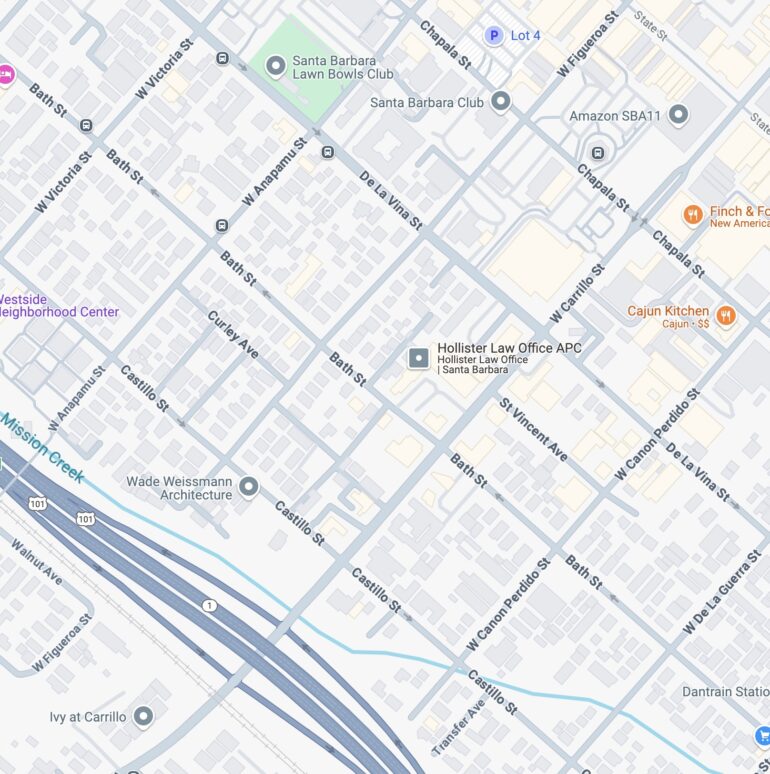 I’m going to say it again, but with more vigor: the flavor of Santa Barbara goes well beyond Spanish Colonial Revival architecture; the glorious mix is what makes this town unique, rather than a mere facsimile of somewhere else. (And so little of the new Spanish Colonial Revival architecture seems to come from the heart. It’s just a value-engineered version of a century-old style.) Architects and developers understandably want to take the easiest route through the city’s arduous process, which is more likely to approve plans that look like what already exists—an inevitable result of design by committee. Here’s hoping, however, that more will be willing to take a risk now and then. Anyway, easy for me to say, right?
I’m going to say it again, but with more vigor: the flavor of Santa Barbara goes well beyond Spanish Colonial Revival architecture; the glorious mix is what makes this town unique, rather than a mere facsimile of somewhere else. (And so little of the new Spanish Colonial Revival architecture seems to come from the heart. It’s just a value-engineered version of a century-old style.) Architects and developers understandably want to take the easiest route through the city’s arduous process, which is more likely to approve plans that look like what already exists—an inevitable result of design by committee. Here’s hoping, however, that more will be willing to take a risk now and then. Anyway, easy for me to say, right?
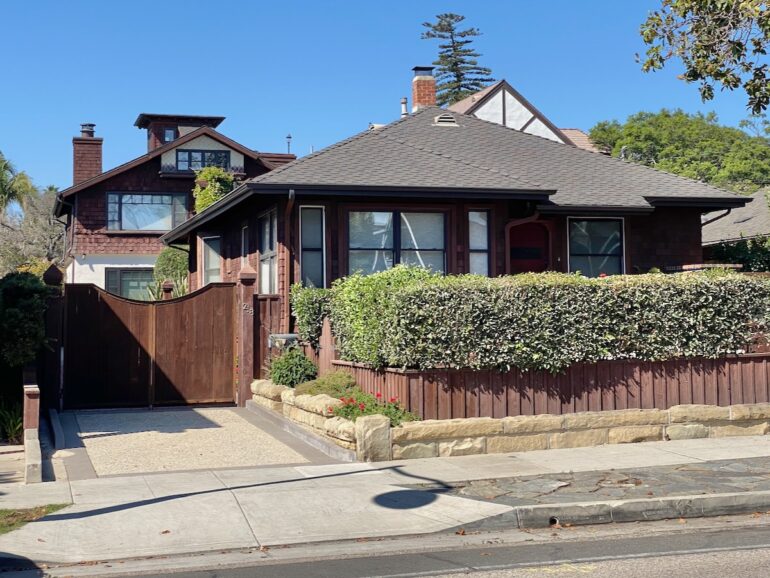
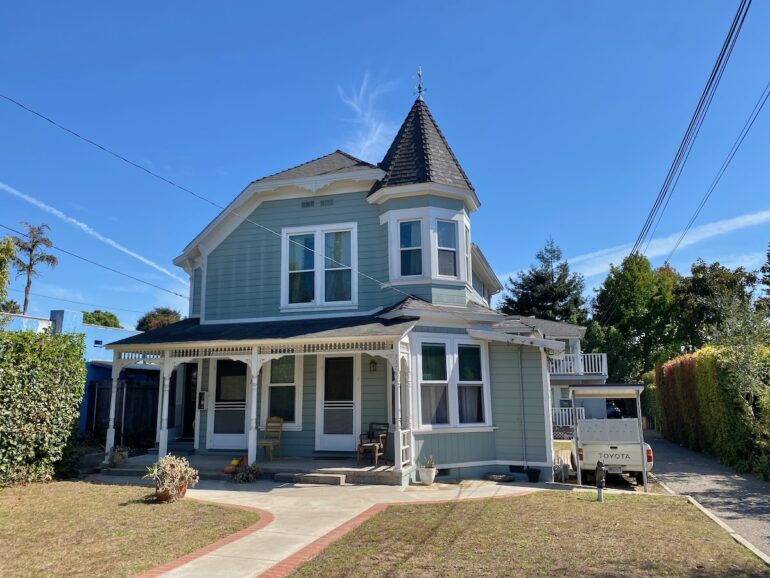

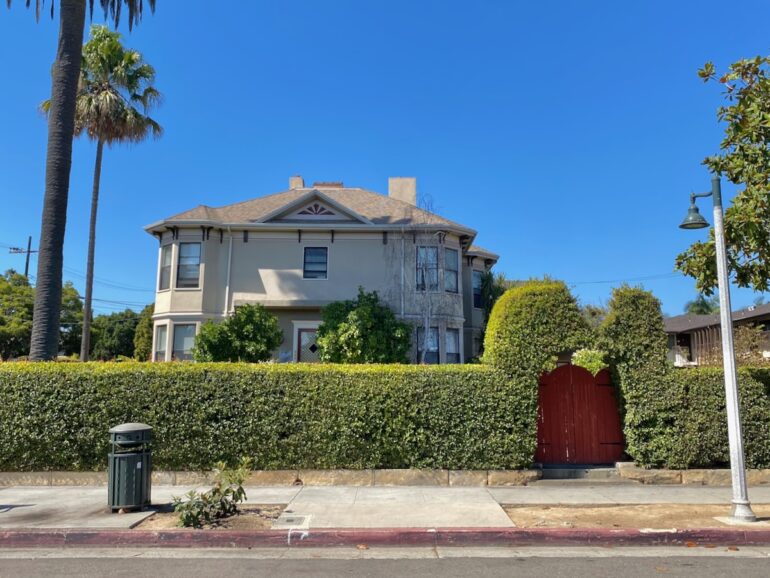
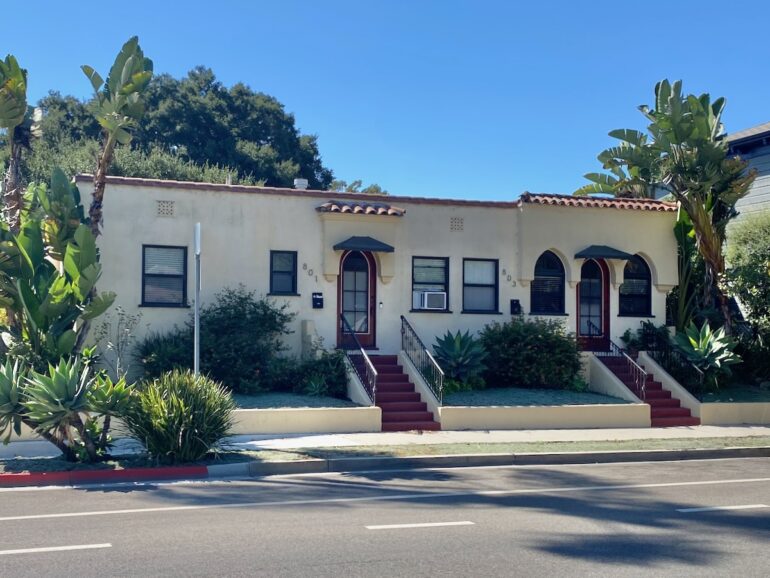
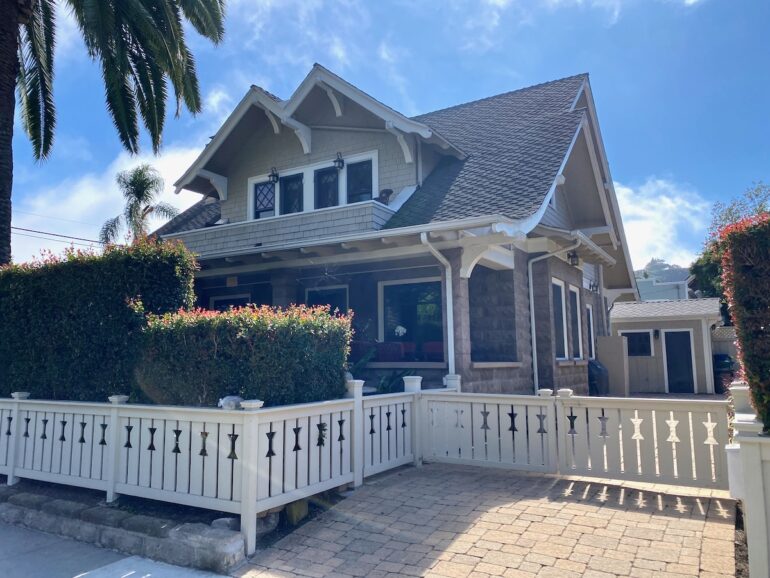
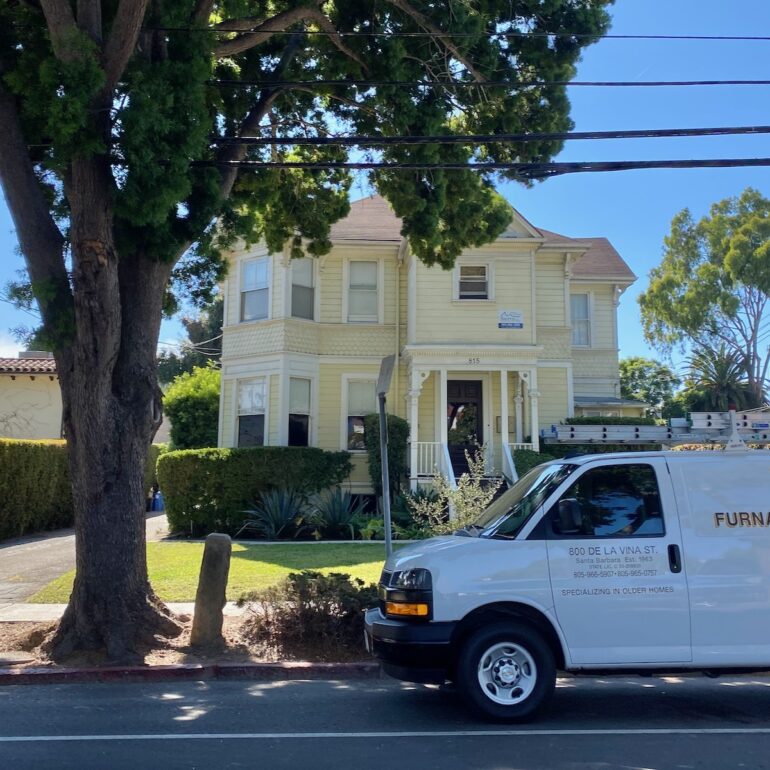
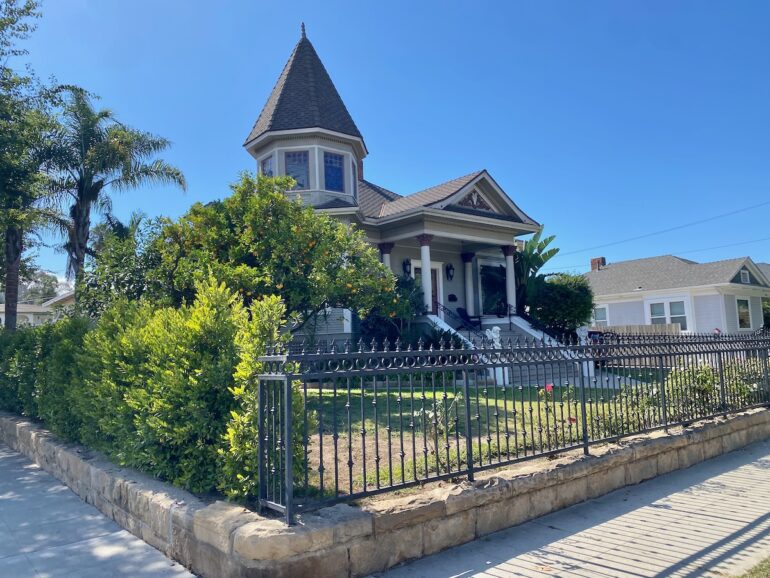
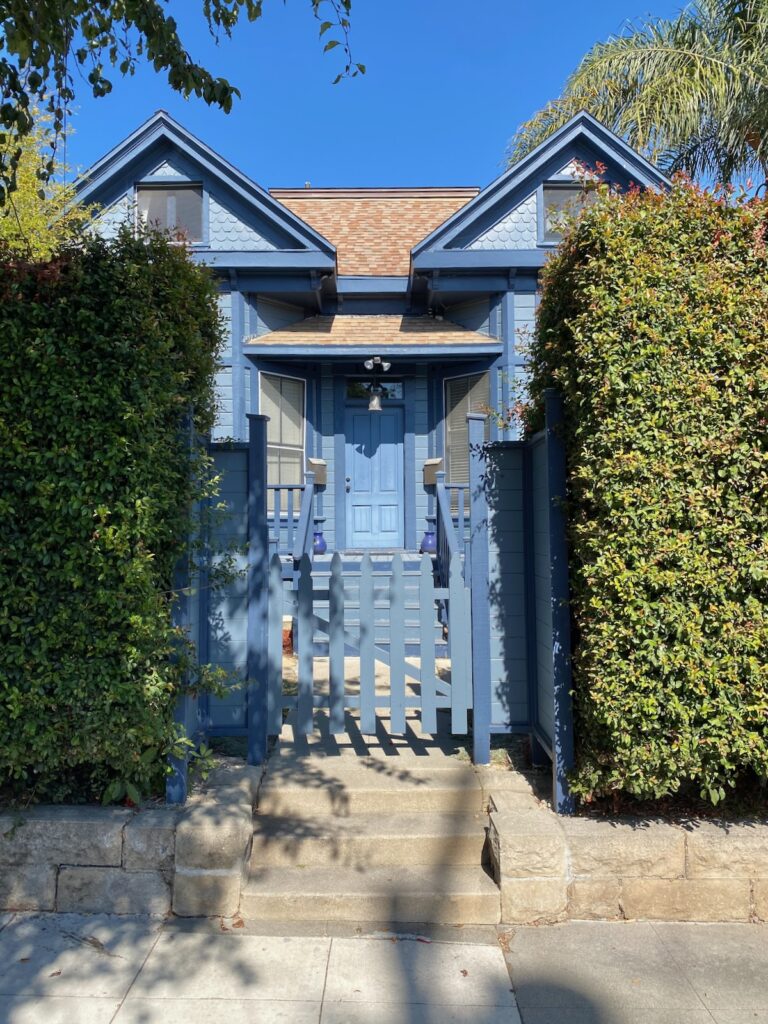
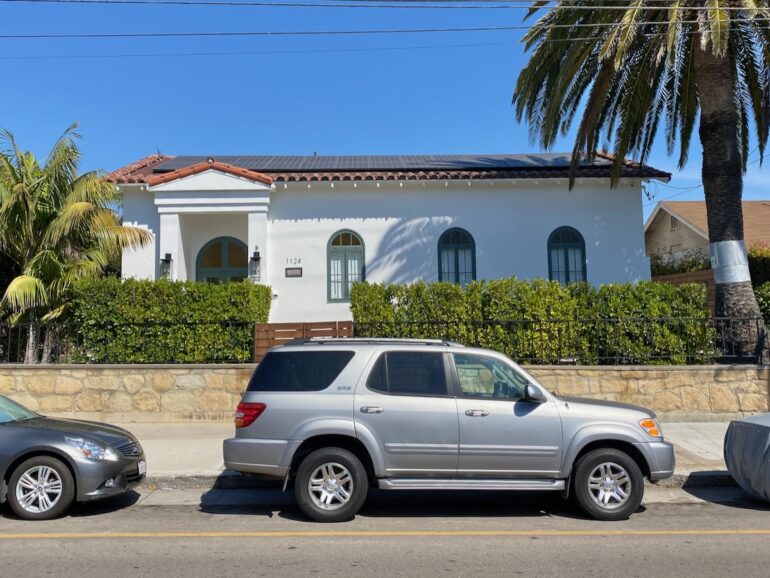
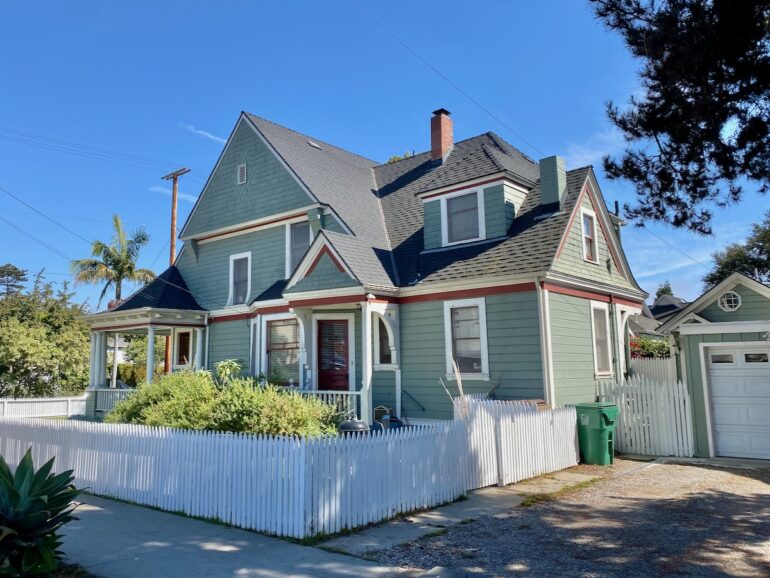
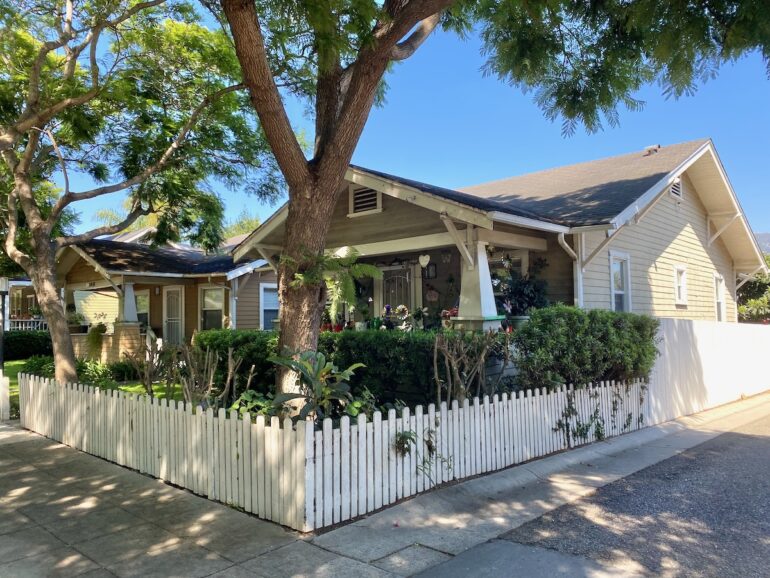
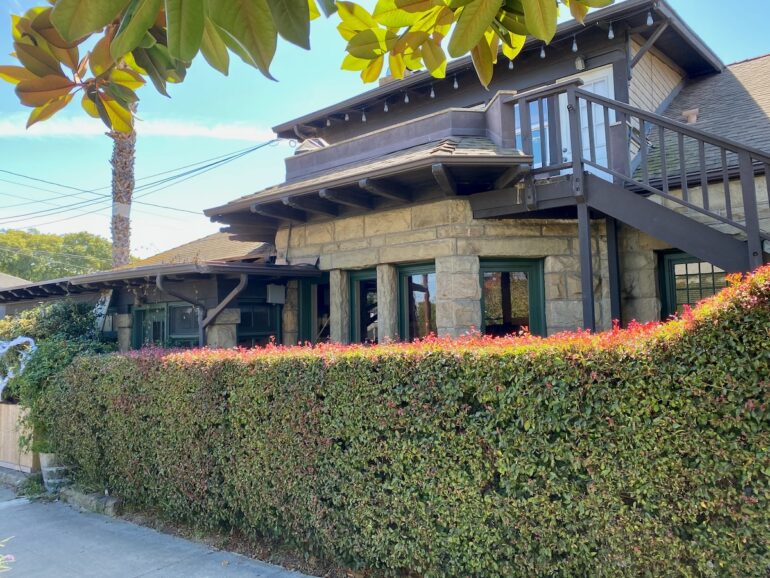 The apartment complexes add flavor, too, even when they’re not as pretty as a Victorian. I do love one with a name—particularly in a frisky font. Do you think Lanai refers to the Hawaiian island or a veranda? And I would wager that Rosewood is not related to the resort chain.
The apartment complexes add flavor, too, even when they’re not as pretty as a Victorian. I do love one with a name—particularly in a frisky font. Do you think Lanai refers to the Hawaiian island or a veranda? And I would wager that Rosewood is not related to the resort chain.
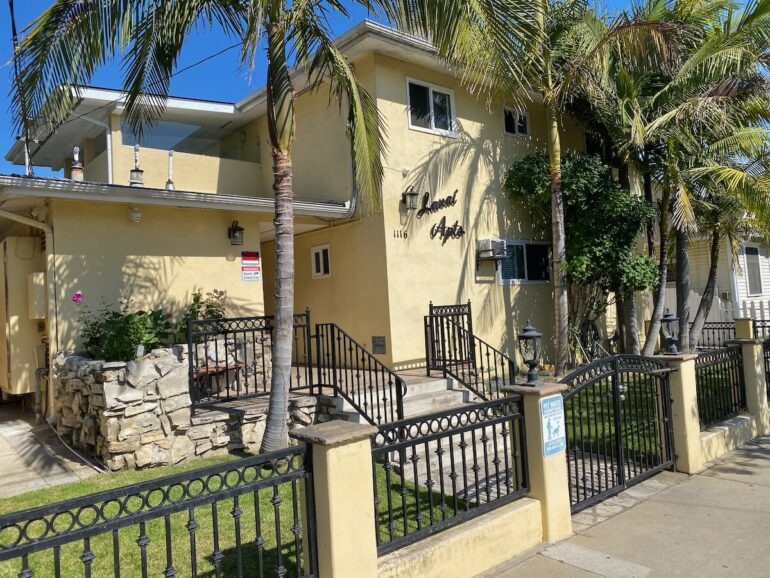
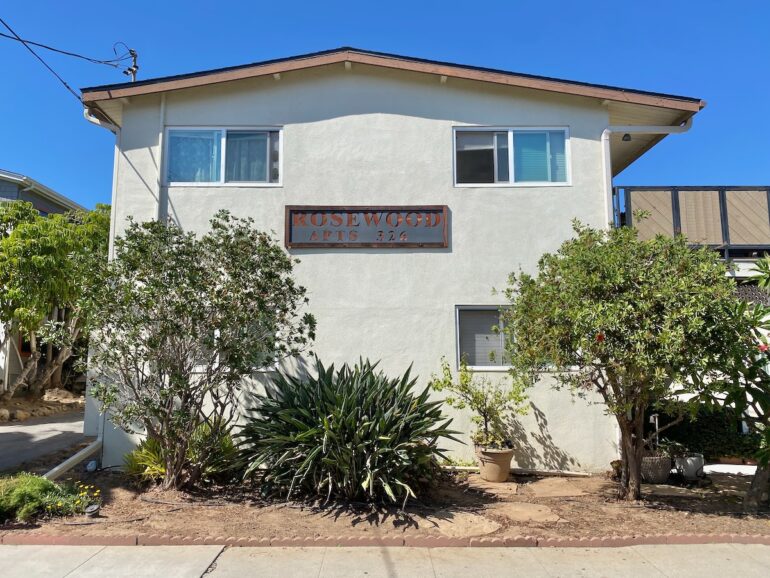
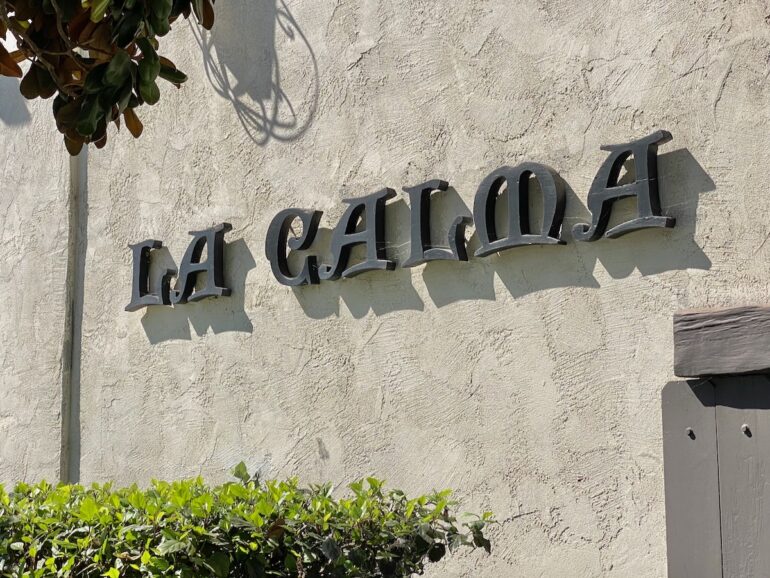
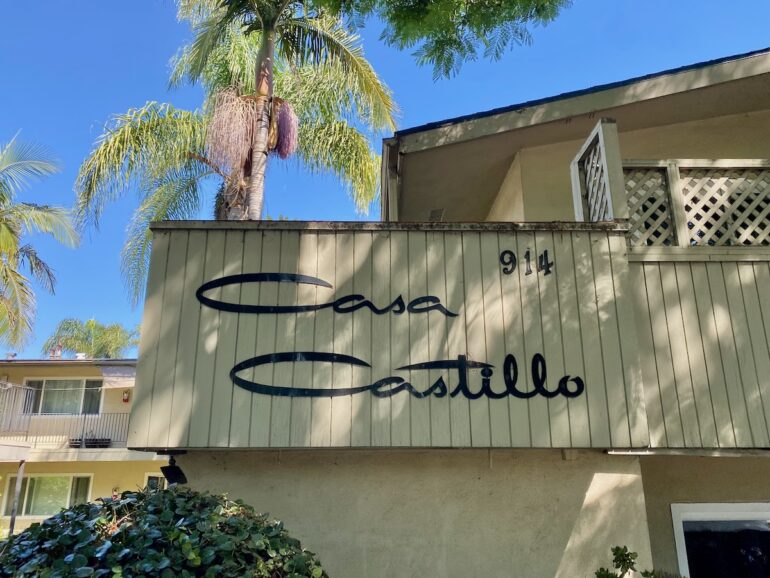 Speaking of frisky fonts, a tip of the hat to Bob Joehnck Automotive’s logo. My last name gives people trouble—I can only imagine what it’s like to be a Joehnck.
Speaking of frisky fonts, a tip of the hat to Bob Joehnck Automotive’s logo. My last name gives people trouble—I can only imagine what it’s like to be a Joehnck.
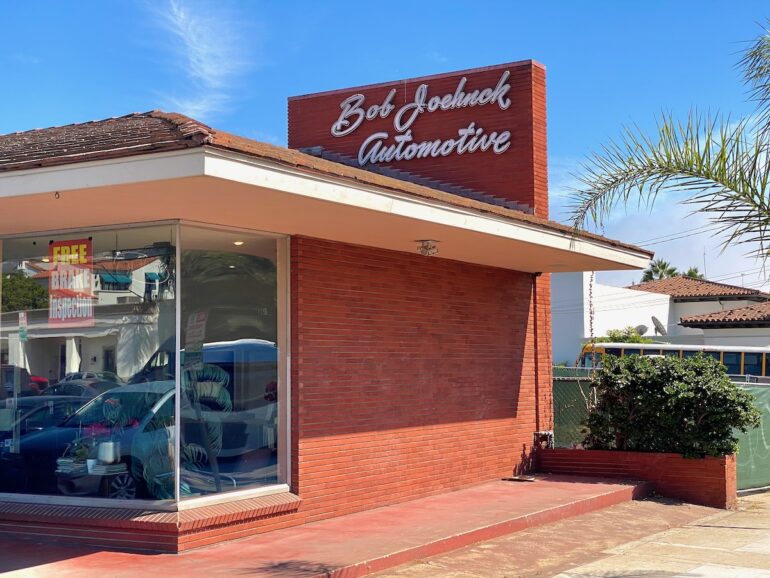 Certain buildings deserve special recognition. Take 925 De La Vina Street, built in 1874 as a school for “less-privileged children,” according to the Independent. “In 1925, the great Santa Barbara earthquake caused structural damage [and] it was subsequently decided that the building’s third story would be removed.” (That link has an old photo to prove it.) Even the building’s backside, on St. Vincent Avenue, is appealing.
Certain buildings deserve special recognition. Take 925 De La Vina Street, built in 1874 as a school for “less-privileged children,” according to the Independent. “In 1925, the great Santa Barbara earthquake caused structural damage [and] it was subsequently decided that the building’s third story would be removed.” (That link has an old photo to prove it.) Even the building’s backside, on St. Vincent Avenue, is appealing.
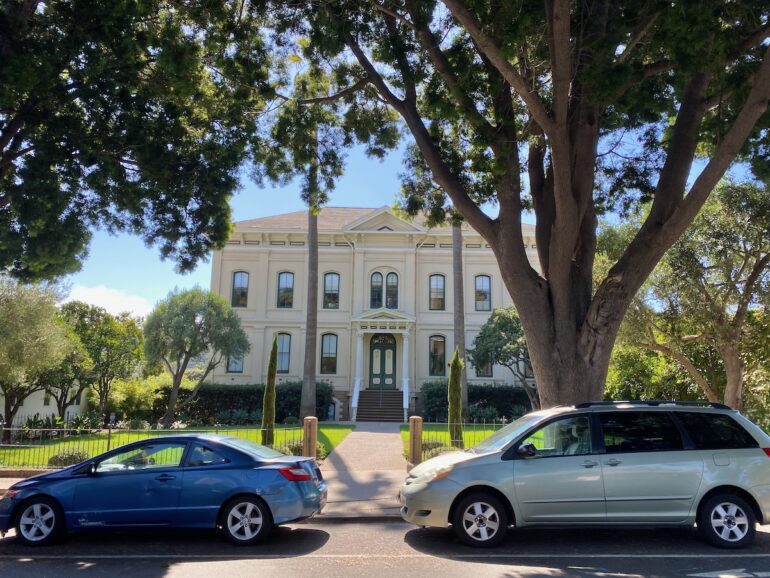
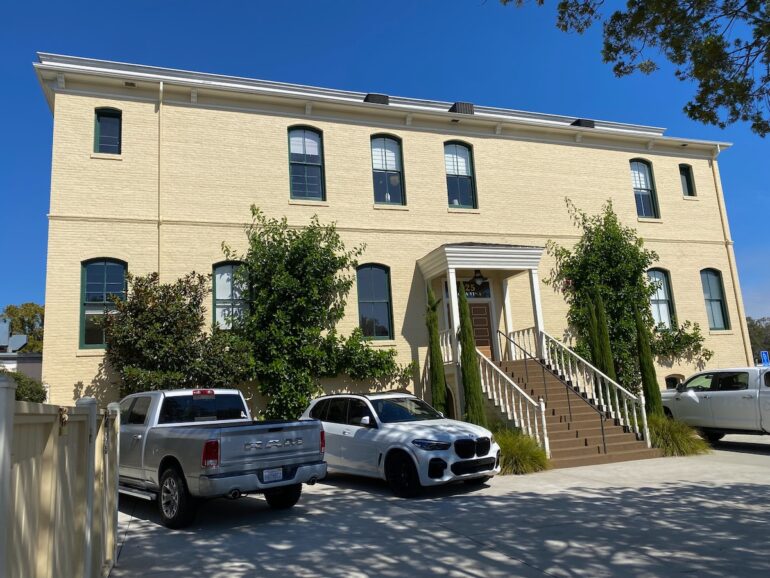 I really like the complex at 910 Castillo Street—there’s so much to look at, and yet it works. Check out the two sets of stairs leading to roof decks.
I really like the complex at 910 Castillo Street—there’s so much to look at, and yet it works. Check out the two sets of stairs leading to roof decks.
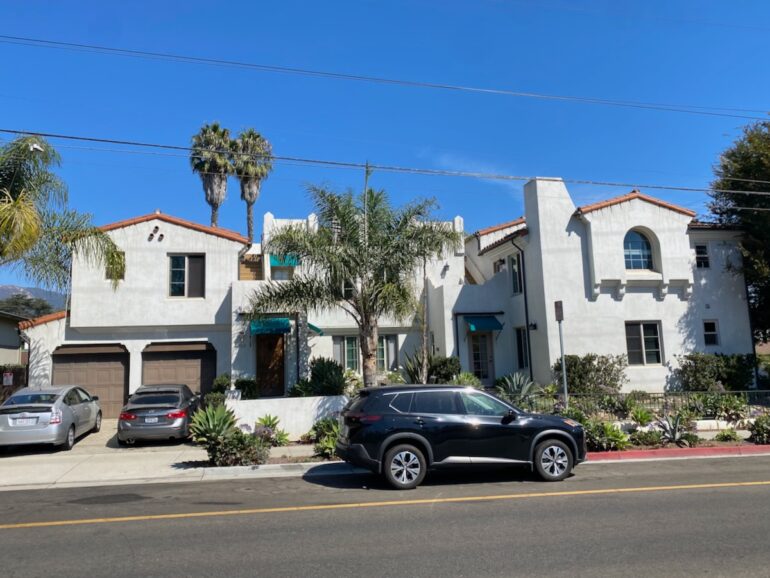 There’s a sexy little bungalow court at 823 Bath Street. I see a face in the distance, sticking out a very long tongue.
There’s a sexy little bungalow court at 823 Bath Street. I see a face in the distance, sticking out a very long tongue.
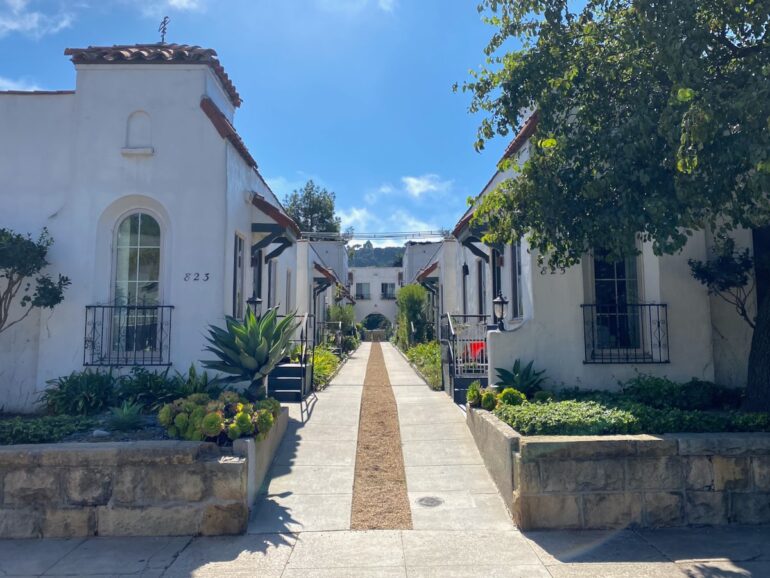 302 W. Anapamu Street is nice enough, but the lavender trim really elevates it.
302 W. Anapamu Street is nice enough, but the lavender trim really elevates it.
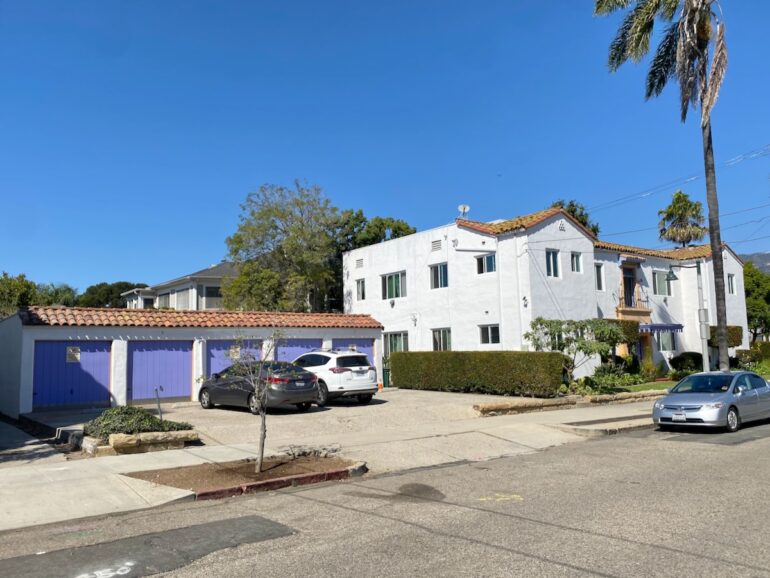 933 Castillo Street was built in 2000, about forty years later than I would’ve guessed. According to a notice posted outside, it’s getting converted into six short-term rentals—precisely what this city doesn’t need more of. Any guesses what the red metal doohickey is for? It reminds me of something on “Liar’s Club” back in the day.
933 Castillo Street was built in 2000, about forty years later than I would’ve guessed. According to a notice posted outside, it’s getting converted into six short-term rentals—precisely what this city doesn’t need more of. Any guesses what the red metal doohickey is for? It reminds me of something on “Liar’s Club” back in the day.
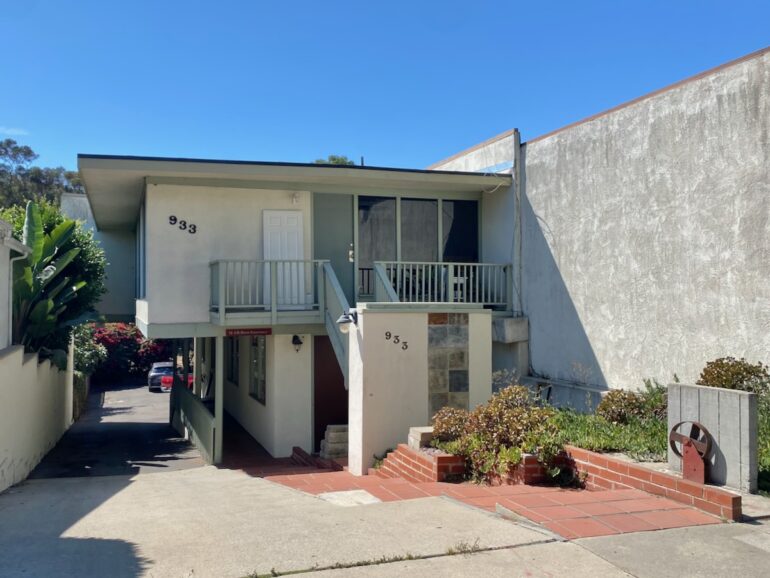
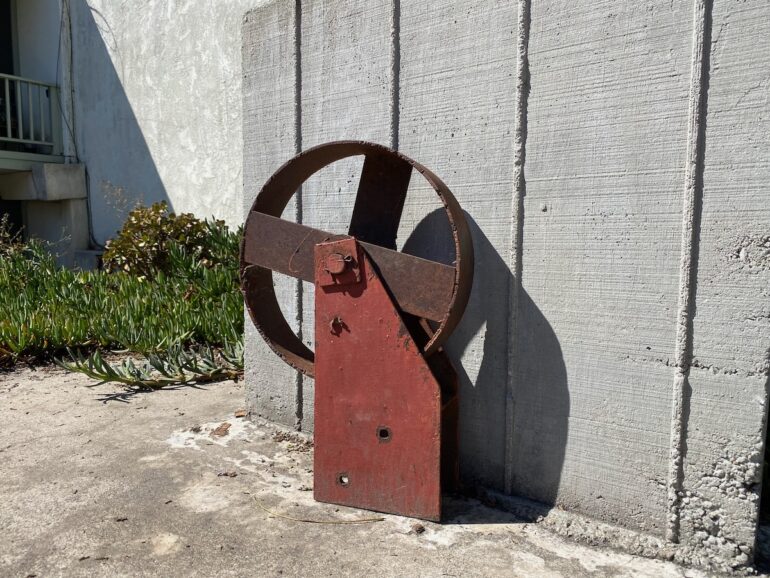 Garden Court on De La Vina (that’s the full name), a housing development for low-income seniors, is rather pretty, at least from the street.
Garden Court on De La Vina (that’s the full name), a housing development for low-income seniors, is rather pretty, at least from the street.
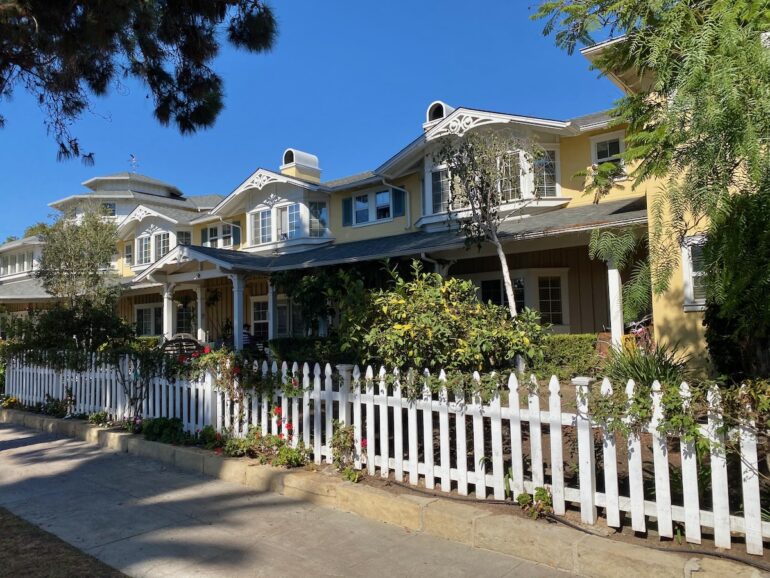 And the 32-unit Santa Barbara Community Housing Corporation complex at 1018-1028 Castillo Street is also quite attractive. Noozhawk covered the 2010 dedication of the property to Clare Conk, who did a lot of good. But the plaque’s promise that the property “from hereafter will be known as the Clare Conk – Castillo Homes” didn’t hold up; signage nearby and the SBHBC website refer to it simply as Castillo Homes.
And the 32-unit Santa Barbara Community Housing Corporation complex at 1018-1028 Castillo Street is also quite attractive. Noozhawk covered the 2010 dedication of the property to Clare Conk, who did a lot of good. But the plaque’s promise that the property “from hereafter will be known as the Clare Conk – Castillo Homes” didn’t hold up; signage nearby and the SBHBC website refer to it simply as Castillo Homes.
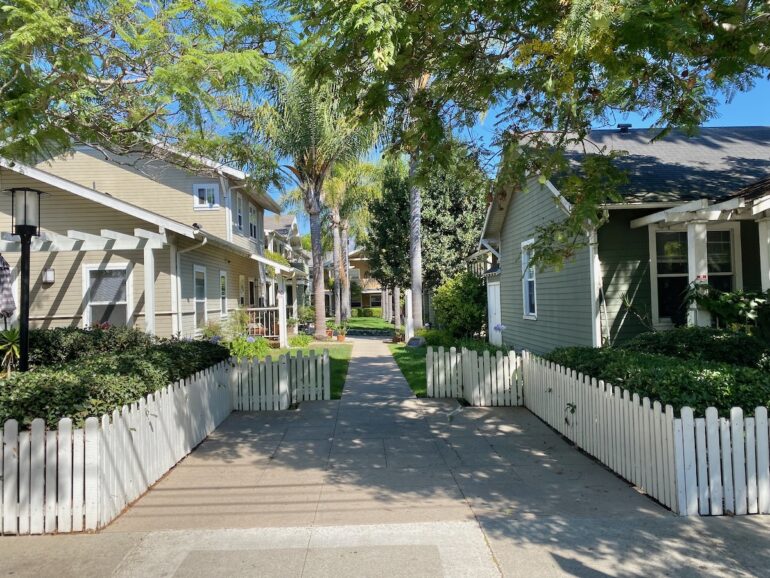
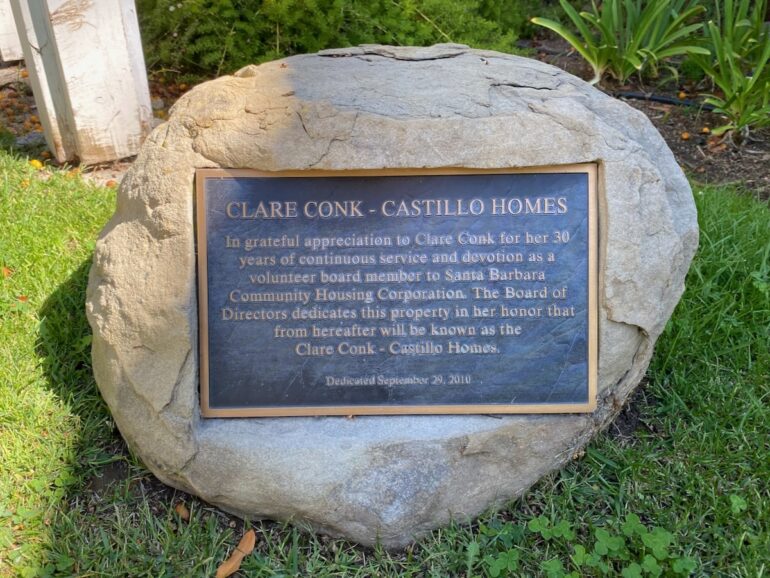 I dig the little duplex at 225 W. Anapamu Street, and not just for the color. I wonder whether the residents share custody of the plant on the wall between the two doorways.
I dig the little duplex at 225 W. Anapamu Street, and not just for the color. I wonder whether the residents share custody of the plant on the wall between the two doorways.
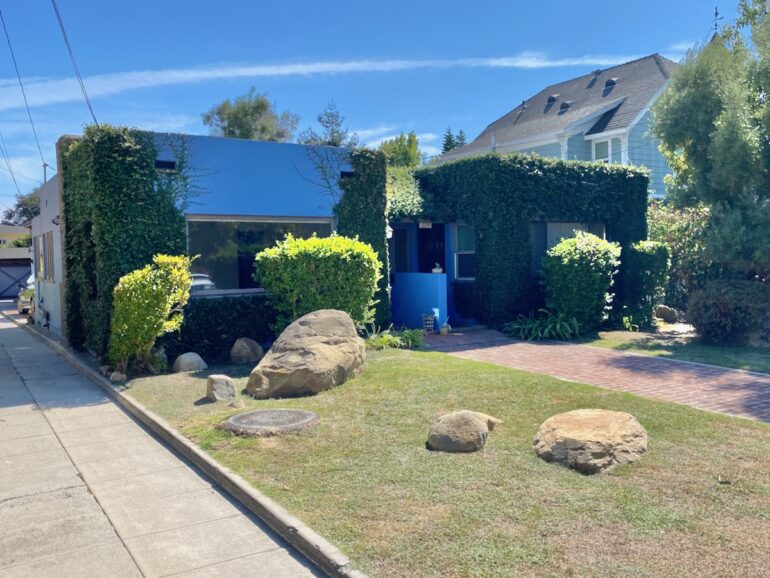 And look at the roof at 824 Bath Street—it’s huge! The roofline of the 1900 building appears to be symmetrical. I’m not sure I get the point of the metal screens along the sidewalk, though.
And look at the roof at 824 Bath Street—it’s huge! The roofline of the 1900 building appears to be symmetrical. I’m not sure I get the point of the metal screens along the sidewalk, though.
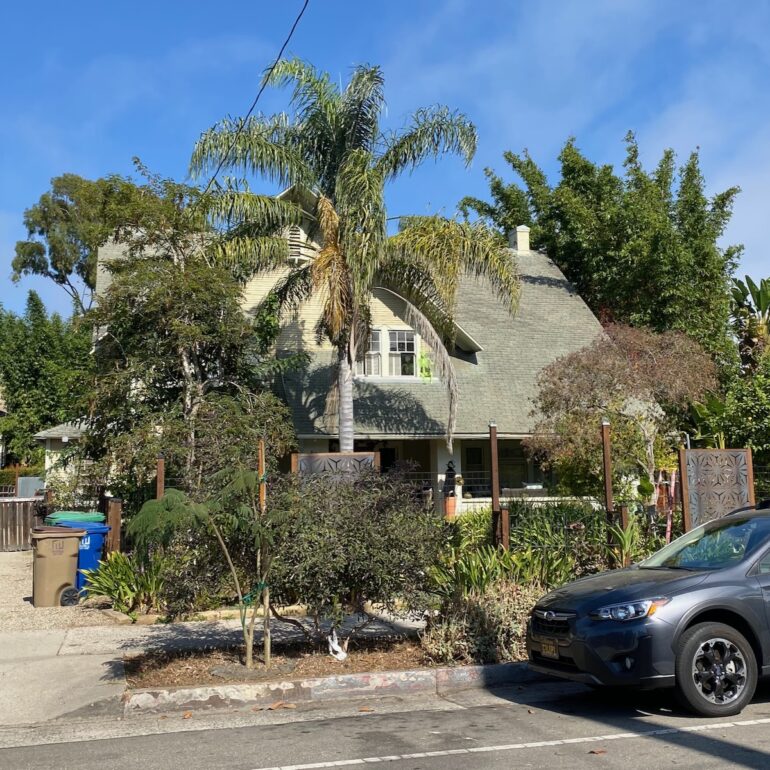
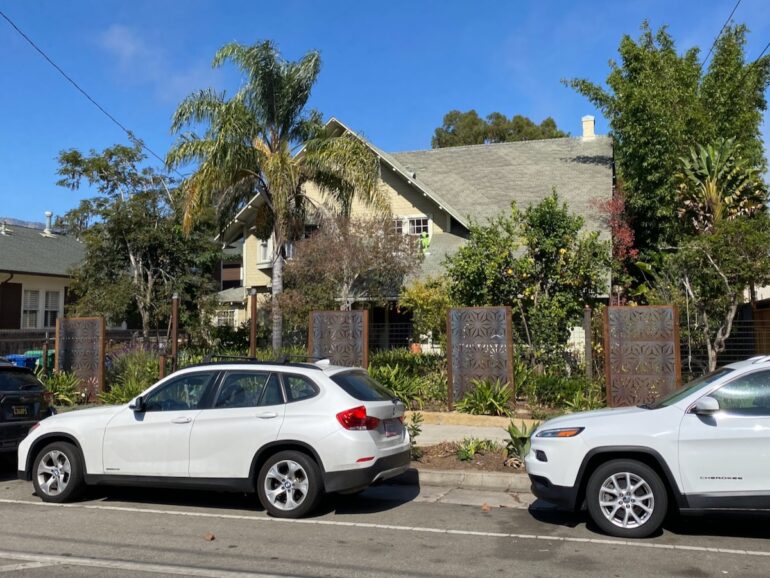 The fabulous building at the corner of Chapala and E. Canon Perdido is slated to become mini-storage, which is a shame. According to the submission to the Architectural Board of Review, self-storage is the only use “that realistically can be implemented for adaptive reuse […] because residential is not allowed due to environmental/toxic issues and office use is simply not viable.” Please, please don’t crap up the facade with ugly signage!
The fabulous building at the corner of Chapala and E. Canon Perdido is slated to become mini-storage, which is a shame. According to the submission to the Architectural Board of Review, self-storage is the only use “that realistically can be implemented for adaptive reuse […] because residential is not allowed due to environmental/toxic issues and office use is simply not viable.” Please, please don’t crap up the facade with ugly signage!
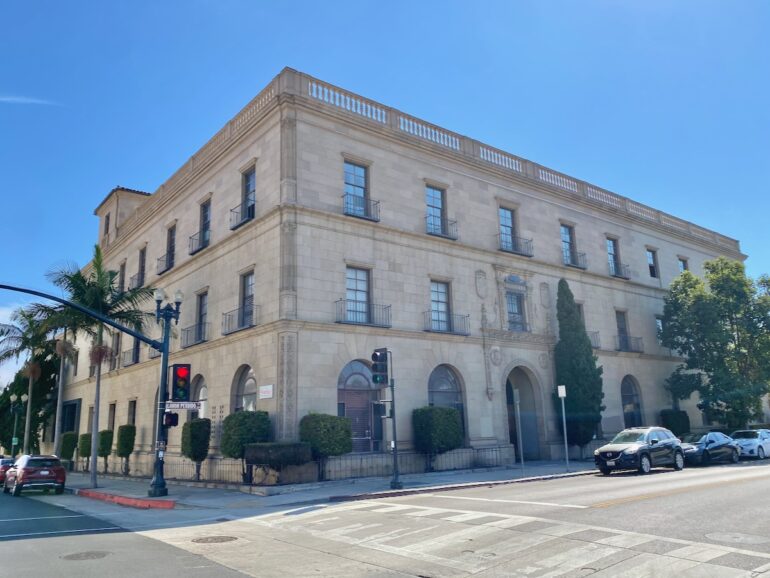
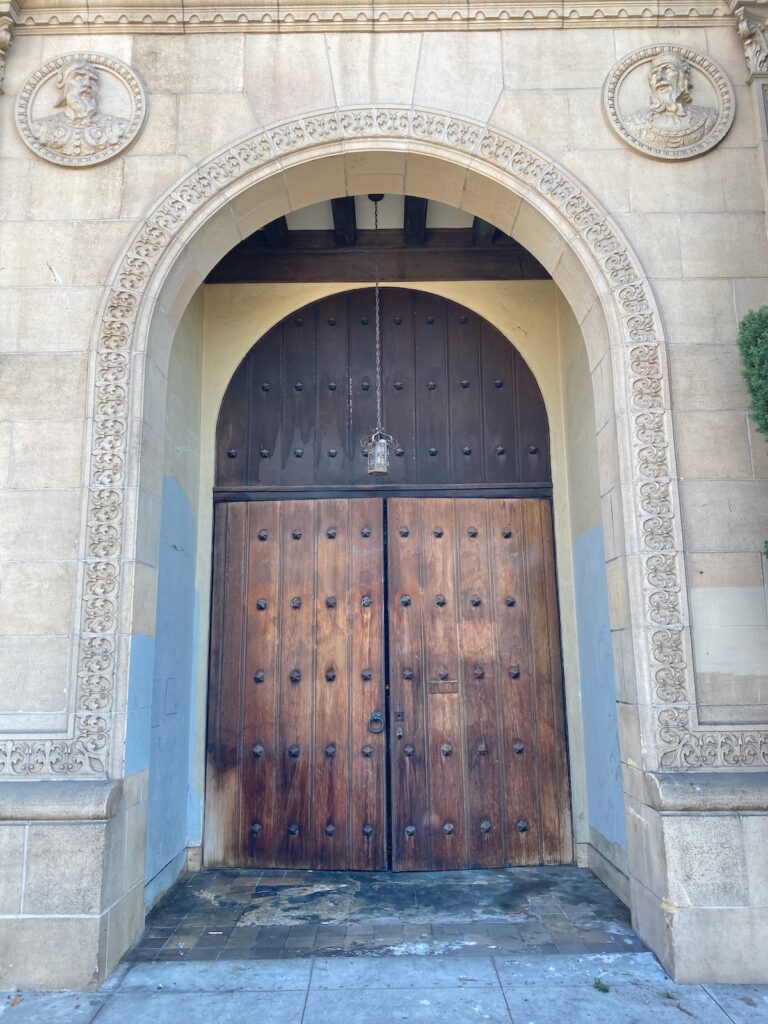 I had never noticed the log cabin at 1121 De La Vina. I thought it might be historically significant, but according to city records, it’s more of an impediment to enjoying the house behind it (1119 De La Vina): “The property has four buildings on the lot. The historically significant building is the two-story, Queen Anne style residence [that] has steeply pitched, cross-gabled roofs with lower gables on the corners of the front elevation. Under the front facing gable are three elongated one-over-one wood windows. The gables feature intricate fish scale shingle siding and the first floor is mainly comprised of wood weatherboard siding. The house features a turret attached to the corner with a polygonal shaped top. There is a log Cabin in the front of the house which covers the view of the first story of the Queen Anne house.” Here’s a photo from before the cabin ruined everything.
I had never noticed the log cabin at 1121 De La Vina. I thought it might be historically significant, but according to city records, it’s more of an impediment to enjoying the house behind it (1119 De La Vina): “The property has four buildings on the lot. The historically significant building is the two-story, Queen Anne style residence [that] has steeply pitched, cross-gabled roofs with lower gables on the corners of the front elevation. Under the front facing gable are three elongated one-over-one wood windows. The gables feature intricate fish scale shingle siding and the first floor is mainly comprised of wood weatherboard siding. The house features a turret attached to the corner with a polygonal shaped top. There is a log Cabin in the front of the house which covers the view of the first story of the Queen Anne house.” Here’s a photo from before the cabin ruined everything.
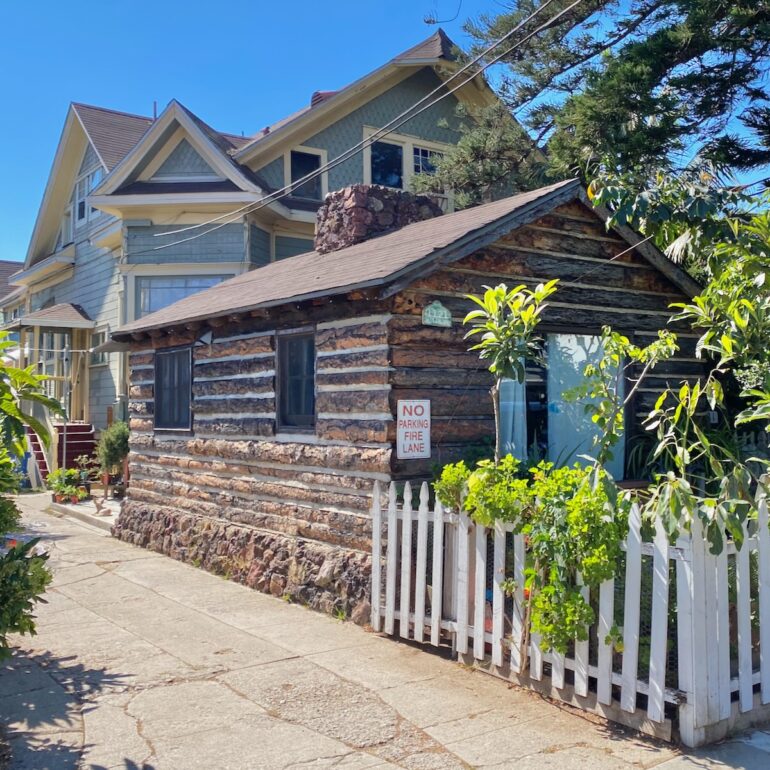 Commercial buildings run the gamut, too. The first one below, on W. Canon Perdido, feels like Newport Beach to me, and it would work better without the clunky portico. As for the Rusty’s Pizza building at 232 W. Carrillo, it apparently dates from 1973, when it was the site of a restaurant called Poor Richard’s Pub. Restaurant Guy commenters said that “the building was bought and reassembled on the site,” which I have not been able to verify, and Poor Richard’s served “good English food” such as Yorkshire pudding and mulled wine.
Commercial buildings run the gamut, too. The first one below, on W. Canon Perdido, feels like Newport Beach to me, and it would work better without the clunky portico. As for the Rusty’s Pizza building at 232 W. Carrillo, it apparently dates from 1973, when it was the site of a restaurant called Poor Richard’s Pub. Restaurant Guy commenters said that “the building was bought and reassembled on the site,” which I have not been able to verify, and Poor Richard’s served “good English food” such as Yorkshire pudding and mulled wine.
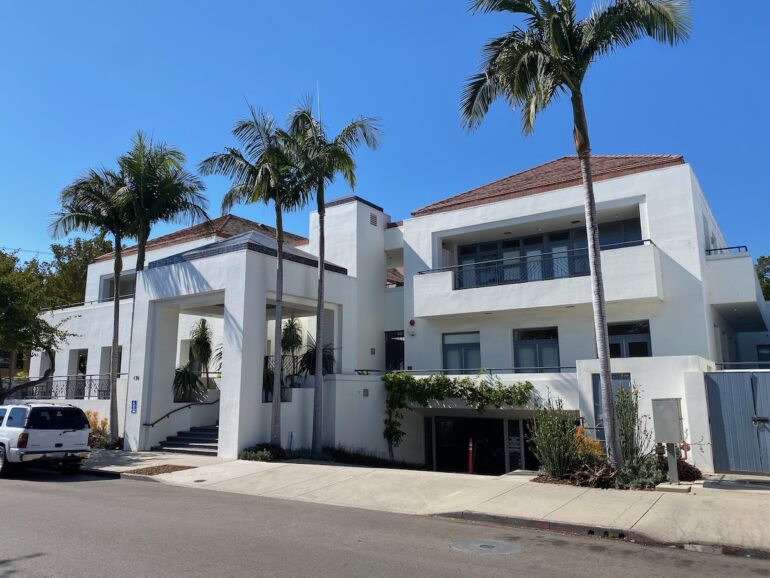

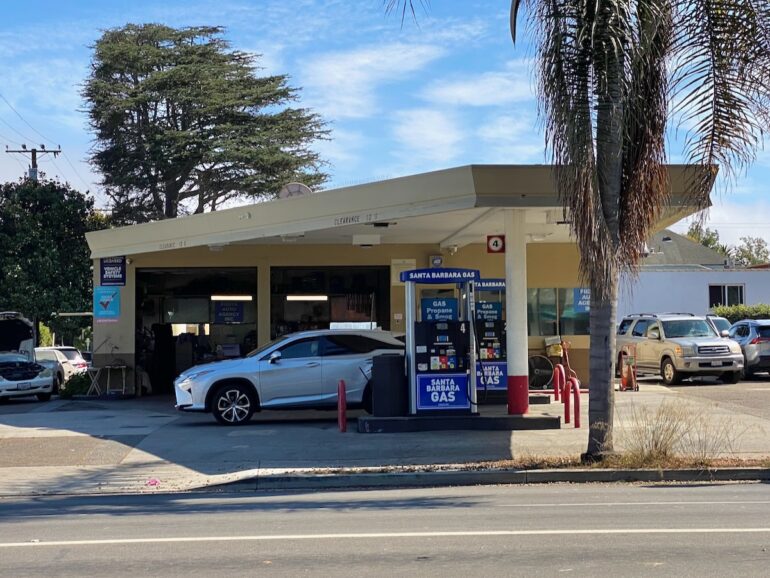
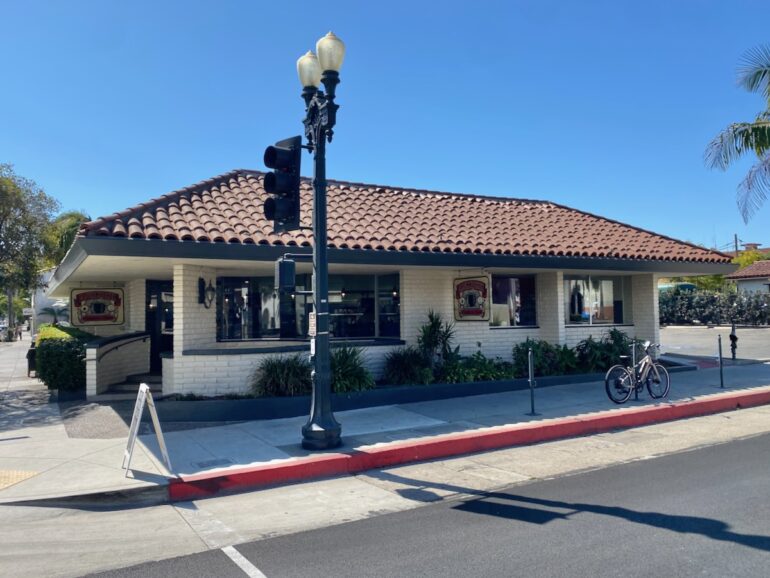 A few years ago, I looked into whether anything happens inside the Paseo Nuevo tower on State Street, and the answer was no. I think we can presume the same about the one on Canon Perdido, which resembles a pawn or a Rubirosa.
A few years ago, I looked into whether anything happens inside the Paseo Nuevo tower on State Street, and the answer was no. I think we can presume the same about the one on Canon Perdido, which resembles a pawn or a Rubirosa.
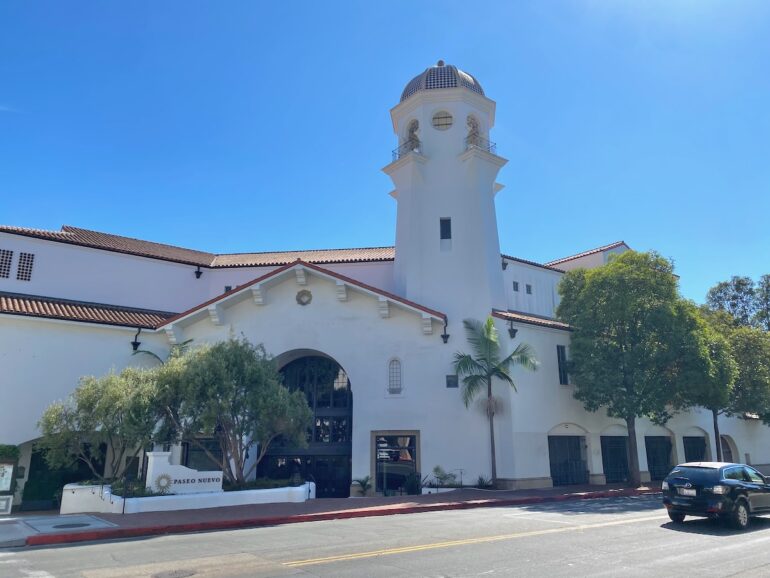 The name Modern Laundry always cracks me up—as opposed to what, washing your clothes on a rock in the river? The developer and architect surely had bigger ambitions for that corner.
The name Modern Laundry always cracks me up—as opposed to what, washing your clothes on a rock in the river? The developer and architect surely had bigger ambitions for that corner.
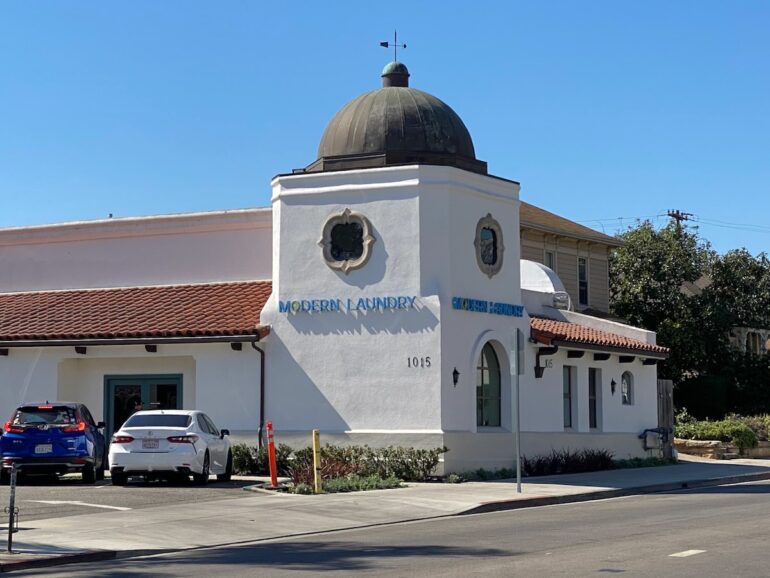 My photo of Red Sand Market at Anapamu and De La Vina doesn’t capture the very cool roofline. And the typeface on the side of the building takes me back to being a kid, when my friends and I would play video games at a local liquor store—when it wasn’t my turn, I’d peruse the off-color greeting cards, which often used similar fonts to this (and from which I learned quite a bit).
My photo of Red Sand Market at Anapamu and De La Vina doesn’t capture the very cool roofline. And the typeface on the side of the building takes me back to being a kid, when my friends and I would play video games at a local liquor store—when it wasn’t my turn, I’d peruse the off-color greeting cards, which often used similar fonts to this (and from which I learned quite a bit).
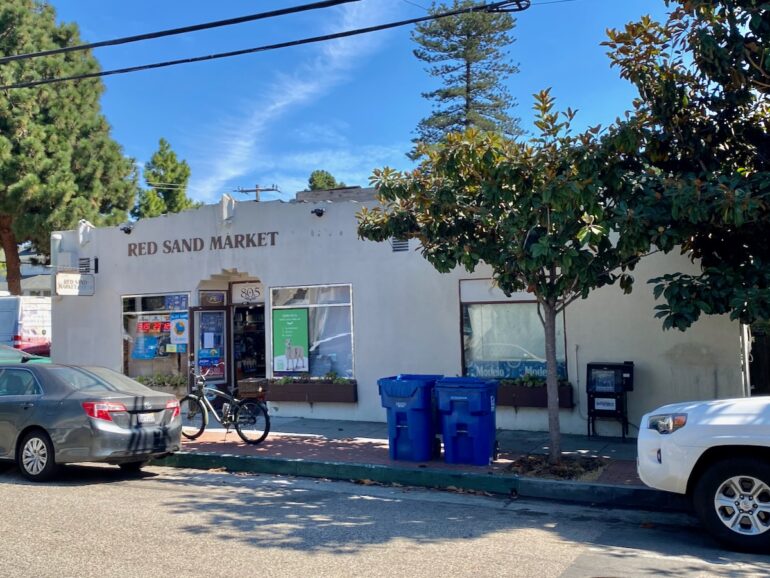
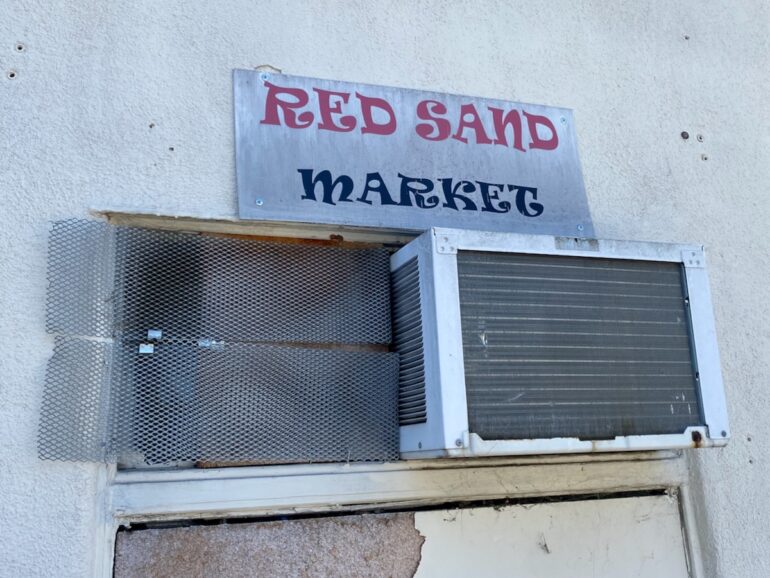 Laugh all you want at yesterday’s architectural styles, but you never know how today’s trends will age. Today’s Farm Outbuilding Era might feel kind of uninspired in a few decades.
Laugh all you want at yesterday’s architectural styles, but you never know how today’s trends will age. Today’s Farm Outbuilding Era might feel kind of uninspired in a few decades.
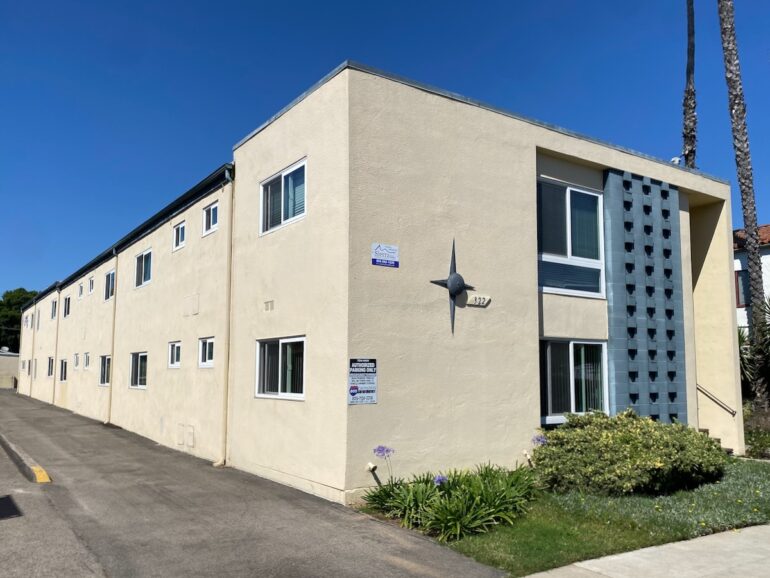
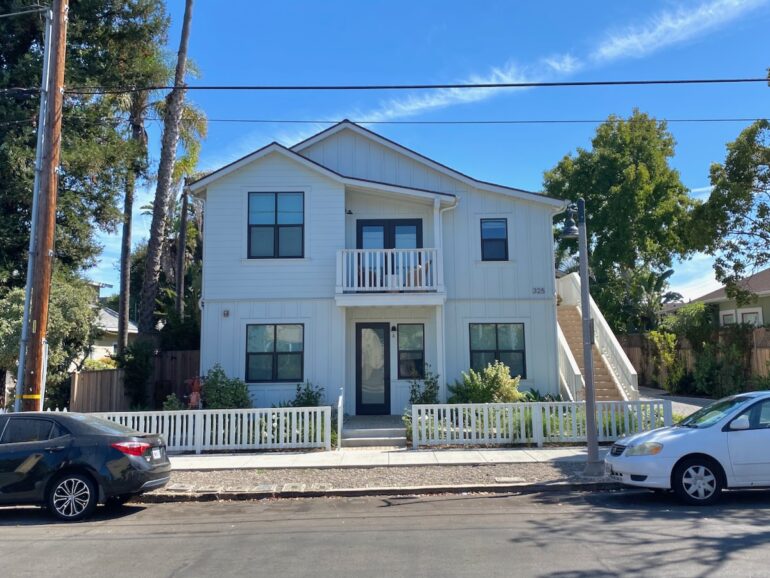
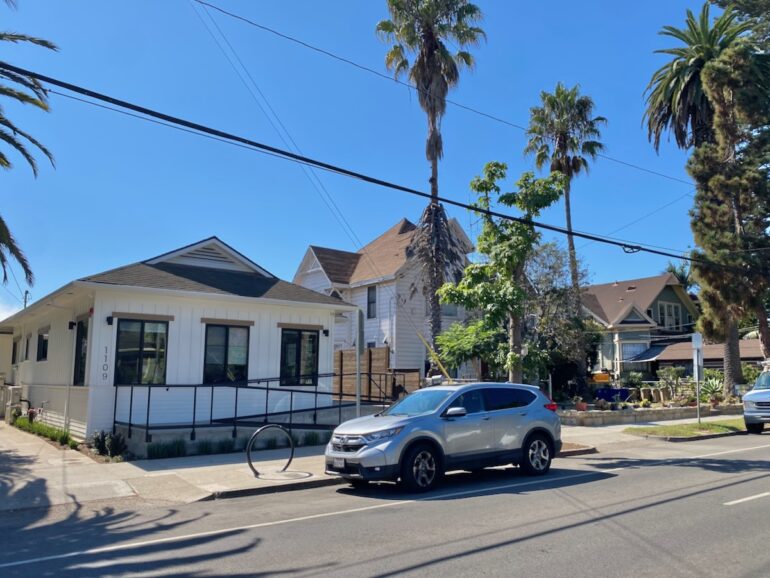 This metal shed is my favorite structure on the entire walk. Perhaps I’ll add it to my birthday list, along with magic mushrooms.
This metal shed is my favorite structure on the entire walk. Perhaps I’ll add it to my birthday list, along with magic mushrooms.
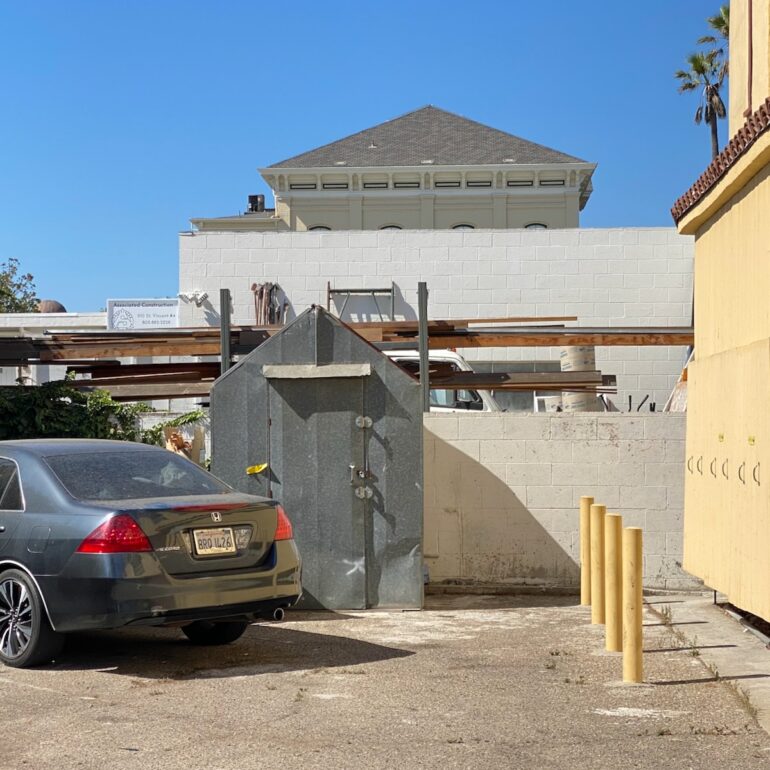 And that’s it for buildings. I did this walk in October, when Halloween decorations were going up. As I mention every fall, sometimes twice, spider webbing is best avoided, because birds and insects get caught in it and die.
And that’s it for buildings. I did this walk in October, when Halloween decorations were going up. As I mention every fall, sometimes twice, spider webbing is best avoided, because birds and insects get caught in it and die.
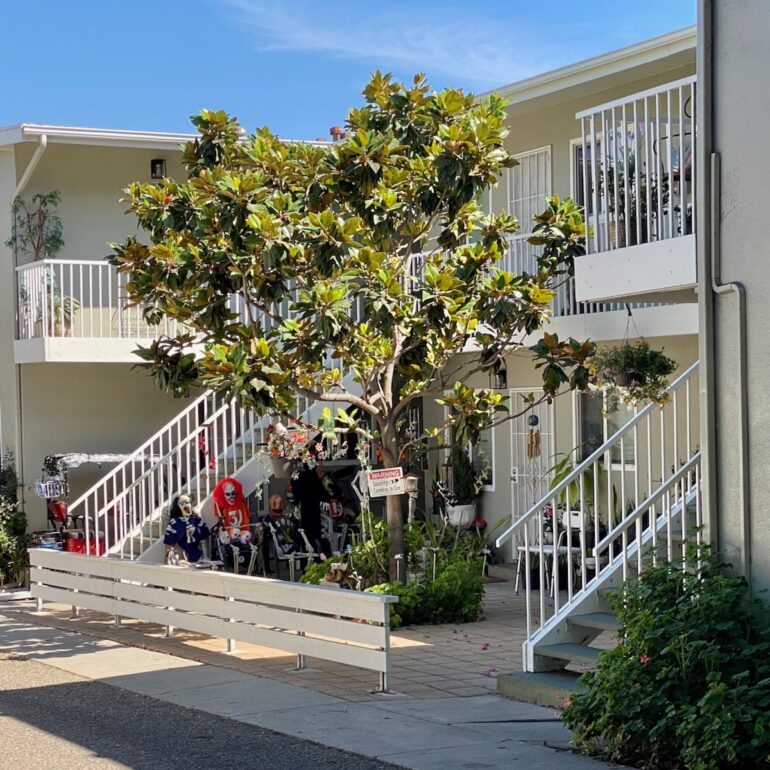
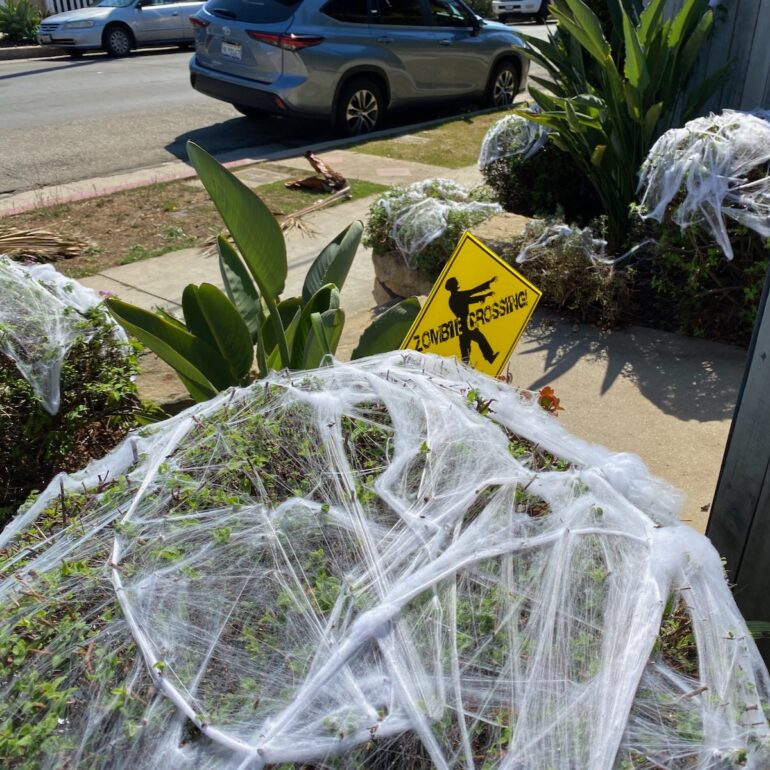 The real thing is scarier, anyway—especially when you walk right into one.
The real thing is scarier, anyway—especially when you walk right into one.

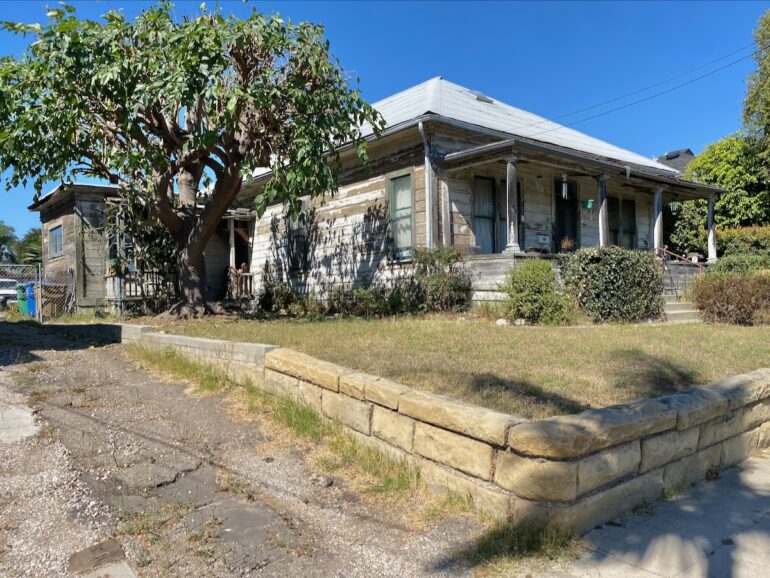 And I don’t know whether this was for Halloween or someone just has a thing for appendages.
And I don’t know whether this was for Halloween or someone just has a thing for appendages.
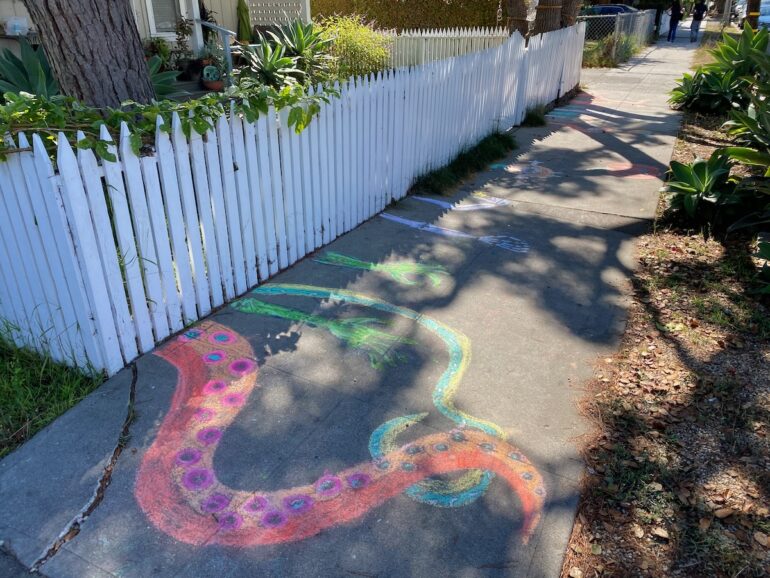 And speaking of holidays, behind the light fixture you can see that this resident is
And speaking of holidays, behind the light fixture you can see that this resident is already still thinking about Christmas.
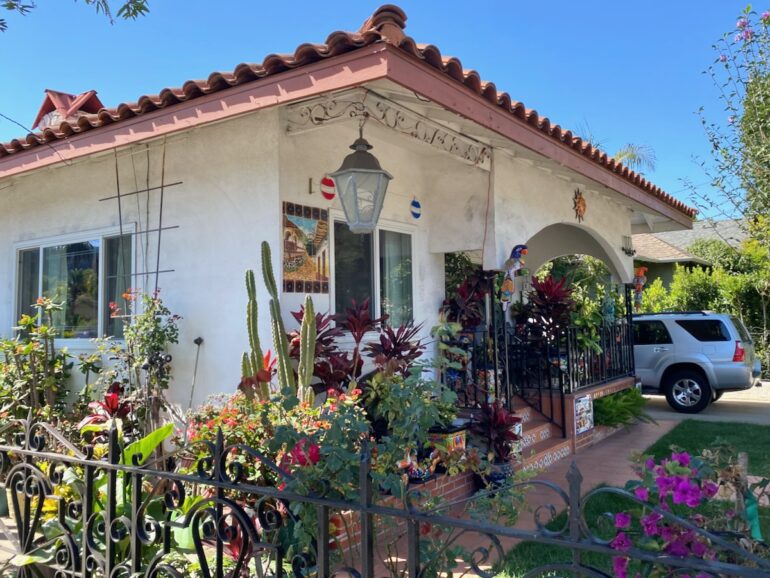 This part of town is similar to the blocks to the south, the subject of a previous walk. Then, as now, I was particularly intrigued by the street stubs created by the freeway. On Transfer Avenue, I admired the pair of regal palms gracing a driveway and the washer-dryers in a porte cochère. Very modern laundry, that!
This part of town is similar to the blocks to the south, the subject of a previous walk. Then, as now, I was particularly intrigued by the street stubs created by the freeway. On Transfer Avenue, I admired the pair of regal palms gracing a driveway and the washer-dryers in a porte cochère. Very modern laundry, that!

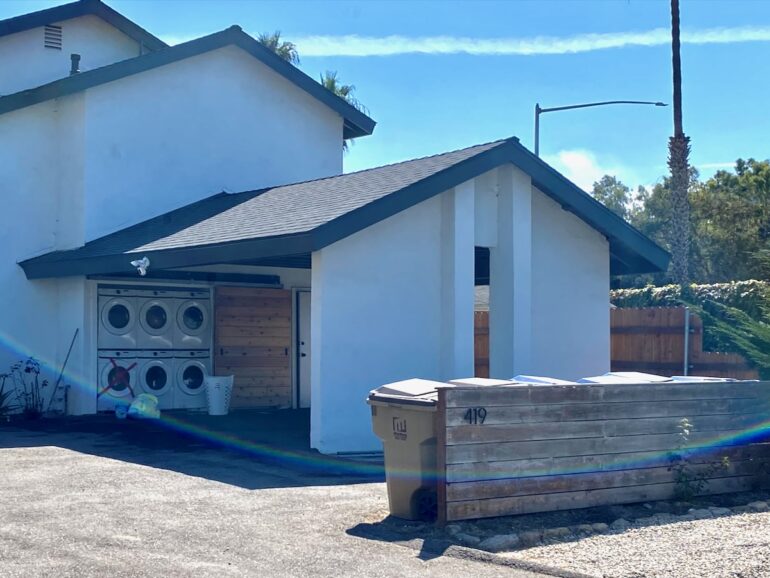 Figueroa’s cul-de-sac has a house practically overtaken with vegetation and a basketball hoop at the end—as good a place as any for one.
Figueroa’s cul-de-sac has a house practically overtaken with vegetation and a basketball hoop at the end—as good a place as any for one.

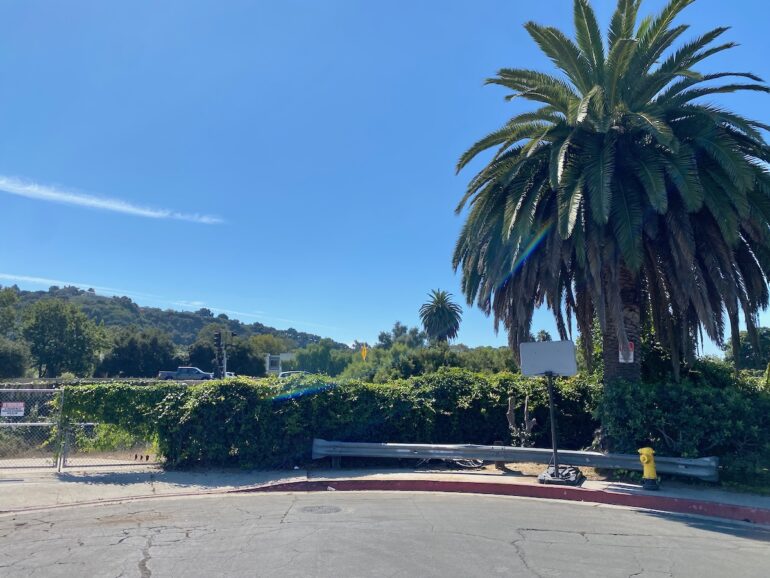 On Anapamu, I was puzzled by the city garbage cans in the middle of the block. They were in front of 415 W. Anapamu, evidently the home of Eagle Paragliding. Then I realized that there’s a pedestrian overpass at the end of Anapamu, which I honestly hadn’t known existed (and yes, that’s embarrassing to admit). I walked it halfway, took in the view of the freeway, and spent the trip back down wondering why there’s a water pipe running along most of the bridge.
On Anapamu, I was puzzled by the city garbage cans in the middle of the block. They were in front of 415 W. Anapamu, evidently the home of Eagle Paragliding. Then I realized that there’s a pedestrian overpass at the end of Anapamu, which I honestly hadn’t known existed (and yes, that’s embarrassing to admit). I walked it halfway, took in the view of the freeway, and spent the trip back down wondering why there’s a water pipe running along most of the bridge.
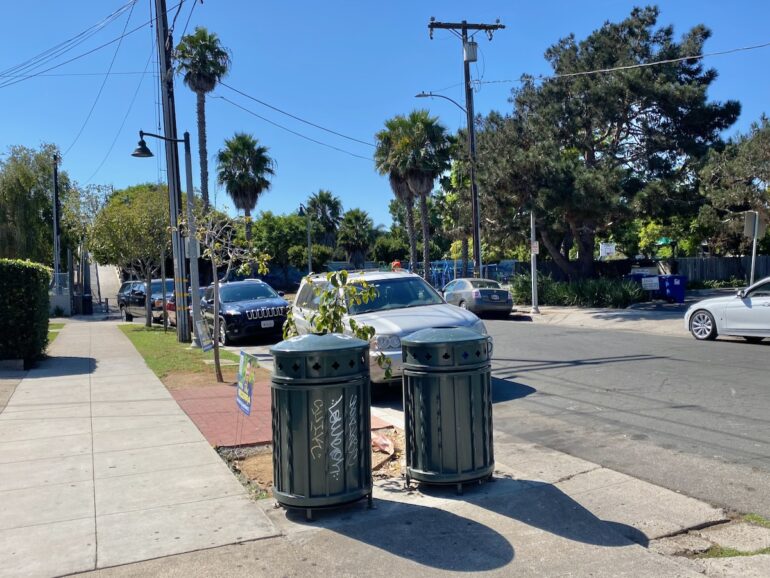
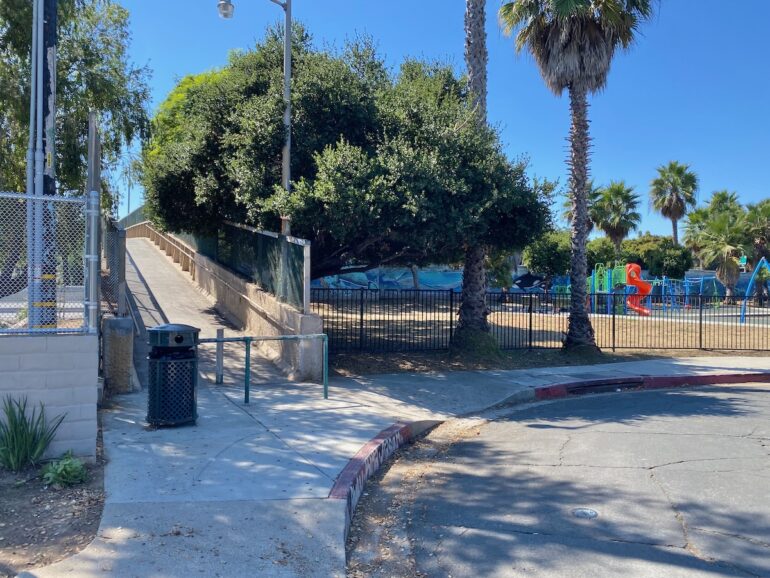
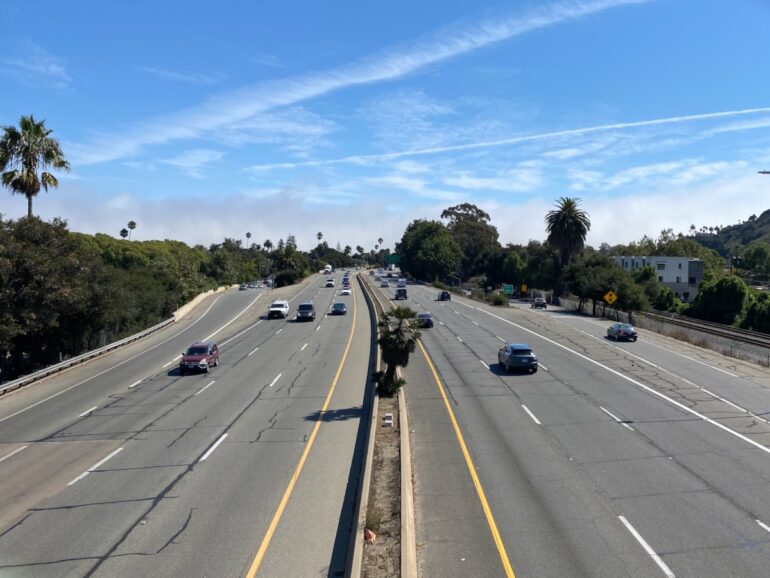
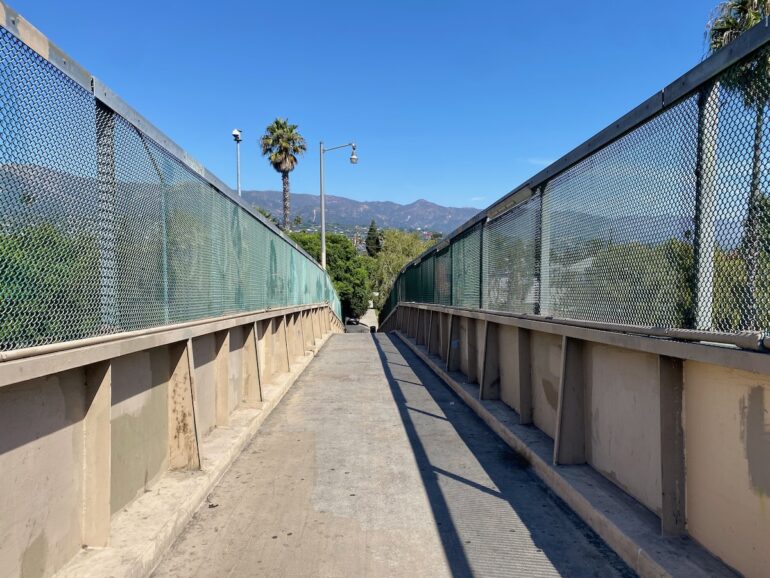
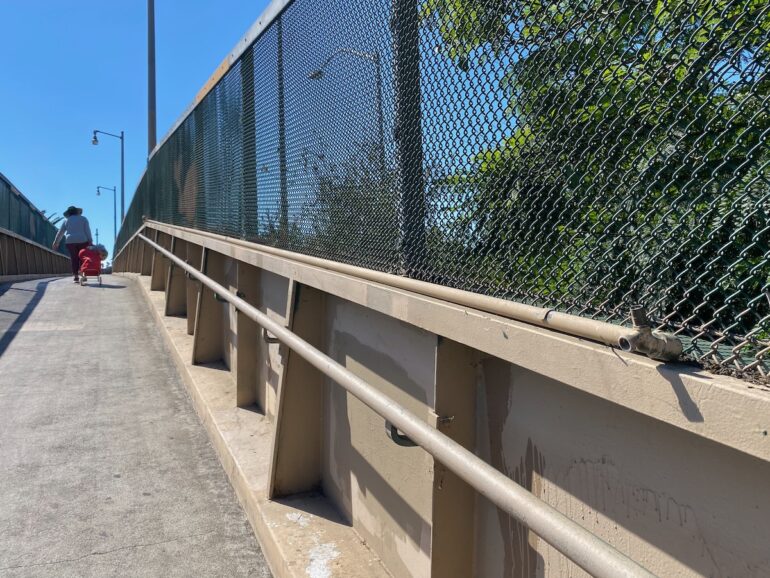 Another defining geographic characteristic of this area: the alleys. Hey Google, make me a map.
Another defining geographic characteristic of this area: the alleys. Hey Google, make me a map.
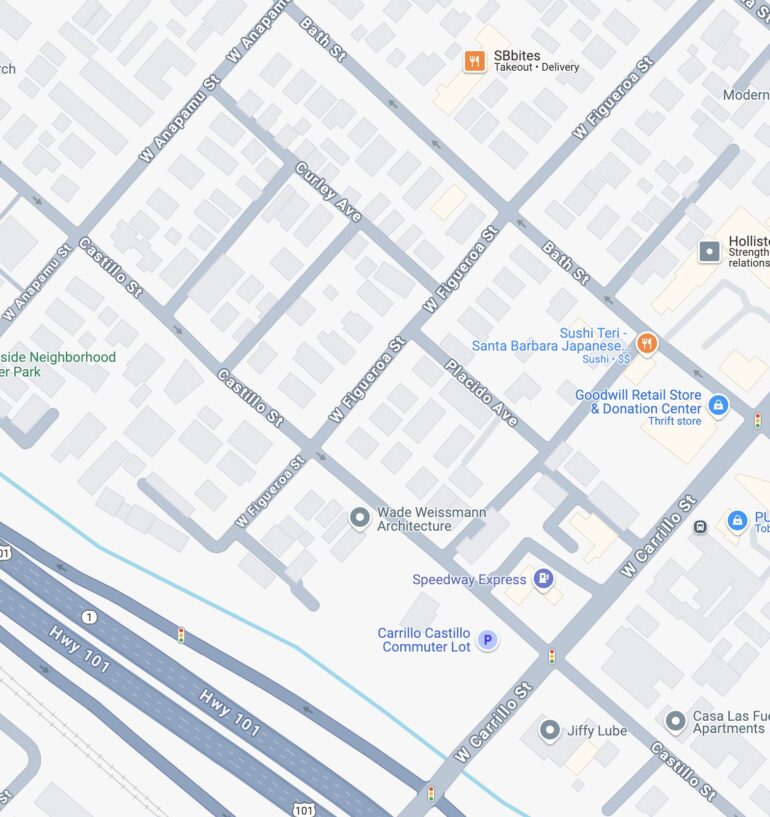 The two blocks bordered by Carrillo/Anapamu and Bath/Castillo are very porous; the interior streets feel more like alleys, regardless of whether they’re named. Here’s what Curley Avenue and its offshoots look like. (Alas, Neal Graffy’s Street Names of Santa Barbara—a lovely gift I recently received—doesn’t explain the etymology of Curley Avenue.)
The two blocks bordered by Carrillo/Anapamu and Bath/Castillo are very porous; the interior streets feel more like alleys, regardless of whether they’re named. Here’s what Curley Avenue and its offshoots look like. (Alas, Neal Graffy’s Street Names of Santa Barbara—a lovely gift I recently received—doesn’t explain the etymology of Curley Avenue.)
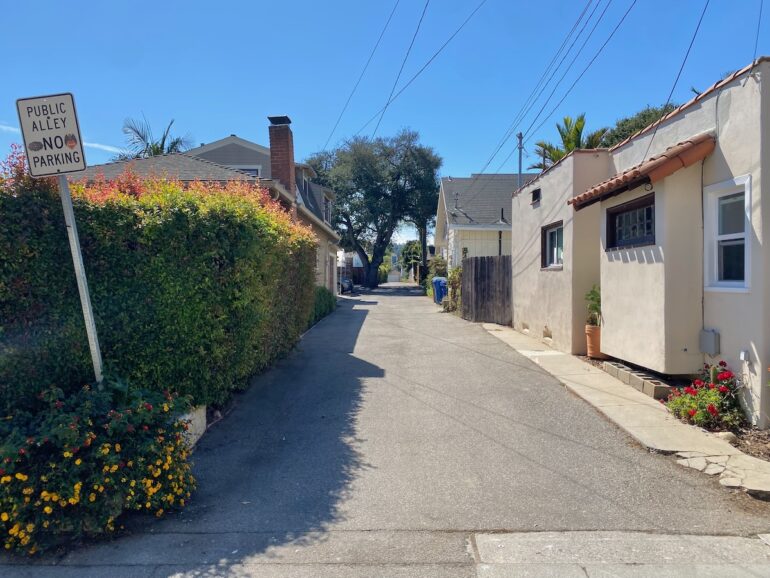
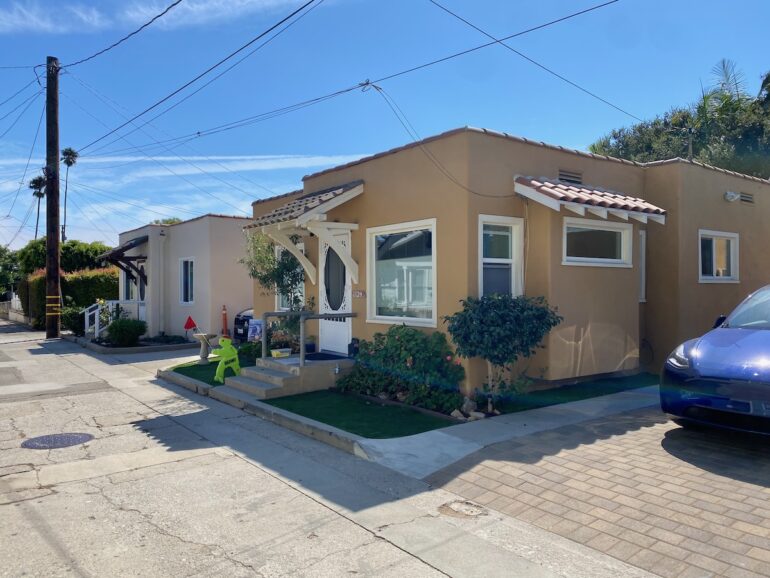

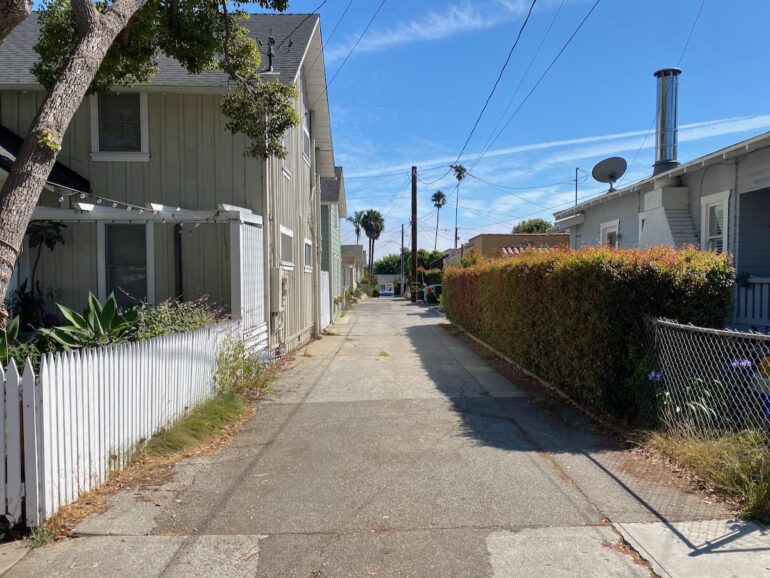
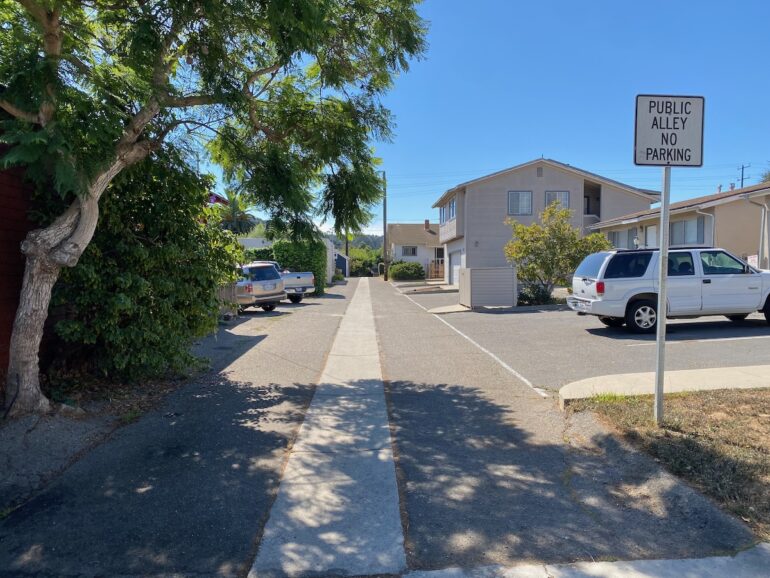 I’d love to know what the architect was going for here.
I’d love to know what the architect was going for here.
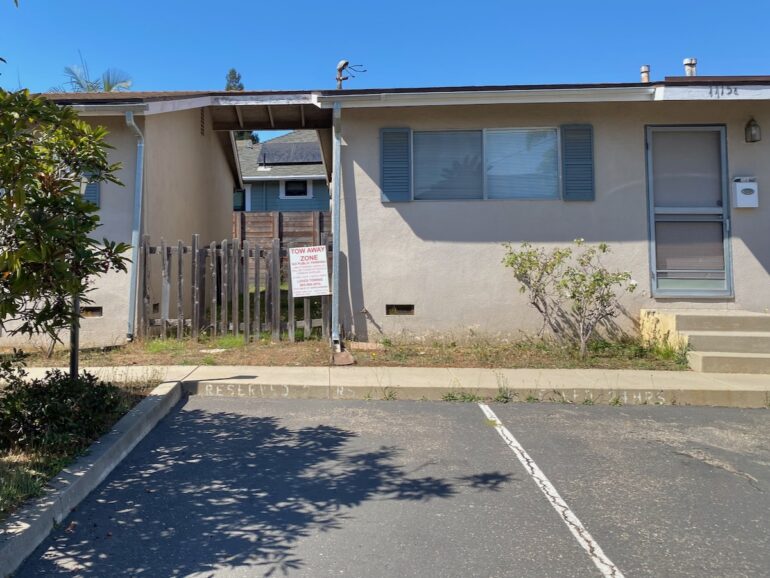 I thought it was kind of silly to put up a slow child until I realized how much parking is embedded within these blocks. With all the cars gone, the lot below could serve as a sweet little plaza.
I thought it was kind of silly to put up a slow child until I realized how much parking is embedded within these blocks. With all the cars gone, the lot below could serve as a sweet little plaza.
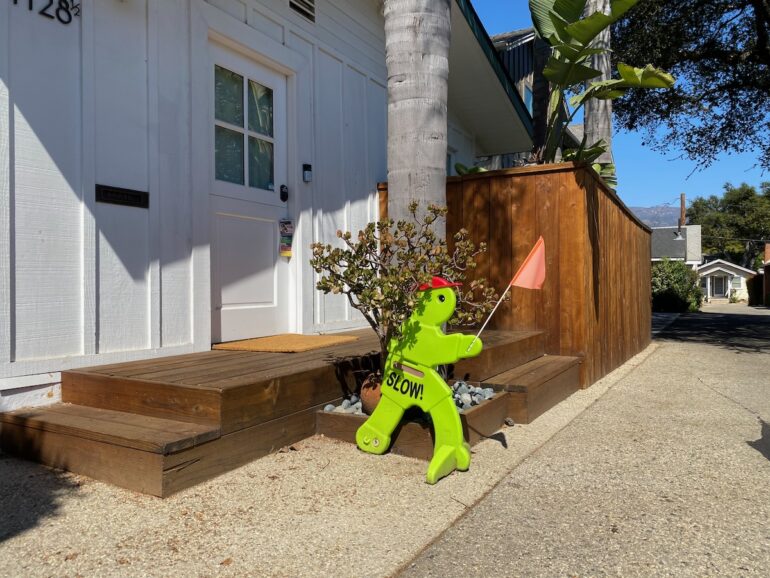
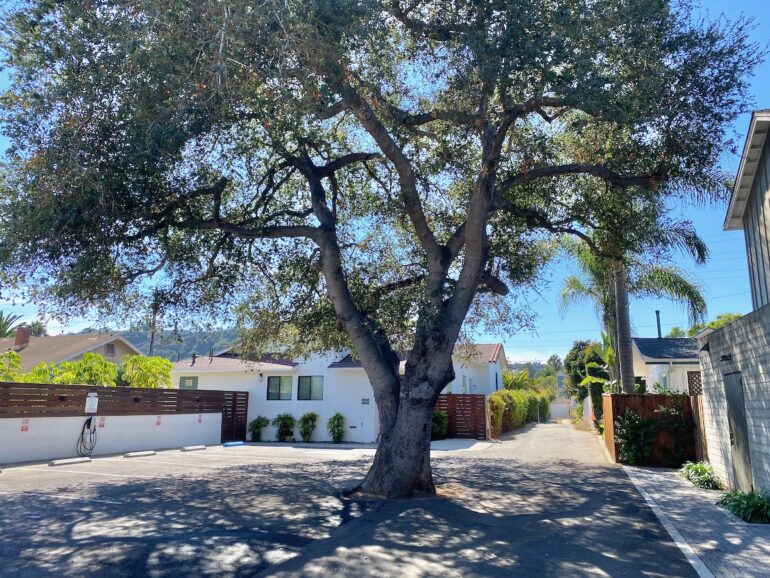 St. Vincent Avenue calls for a song by St. Vincent. I love the street’s blend of new and old—and a hand-lettered address always gets bonus points.
St. Vincent Avenue calls for a song by St. Vincent. I love the street’s blend of new and old—and a hand-lettered address always gets bonus points.
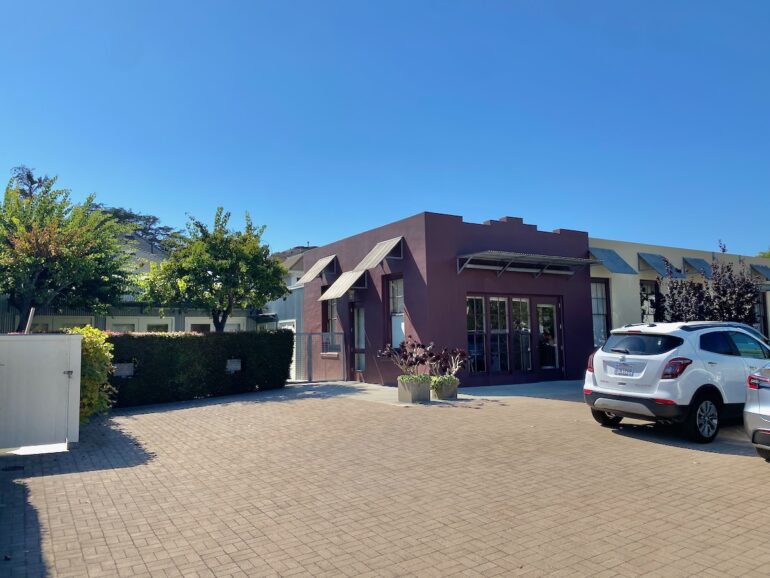
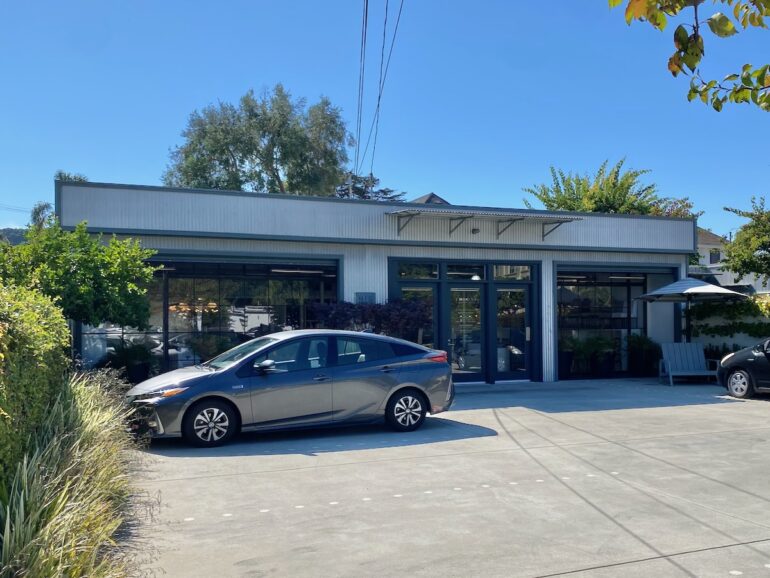
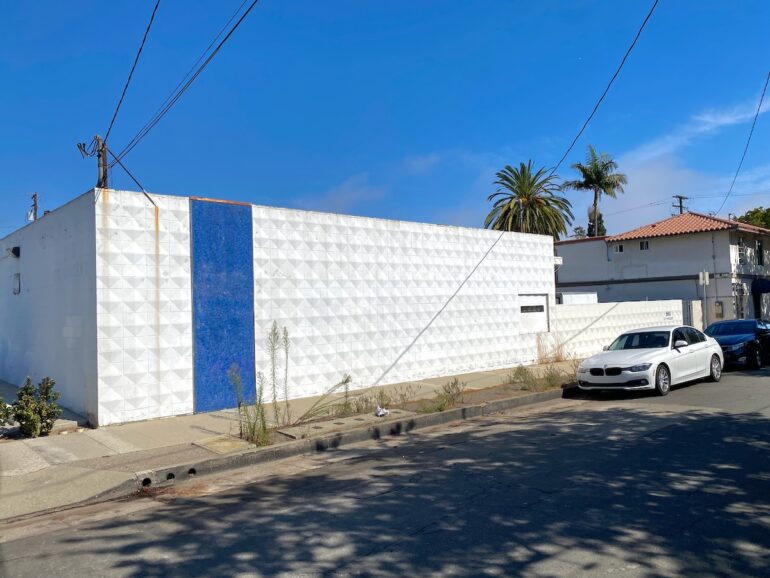
 St. Vincent Avenue is also home to a large parking lot…
St. Vincent Avenue is also home to a large parking lot…
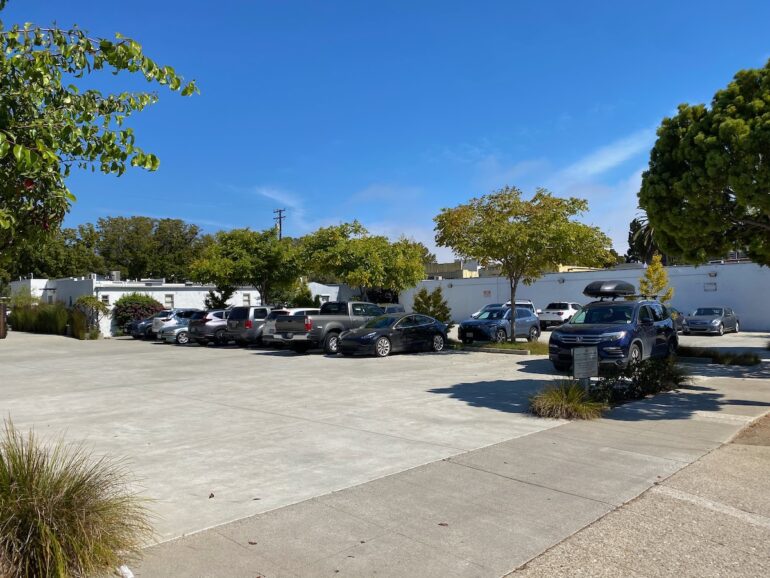 …as is Placido Avenue. It’s kind of crazy how much downtown space is given over to parking.
…as is Placido Avenue. It’s kind of crazy how much downtown space is given over to parking.
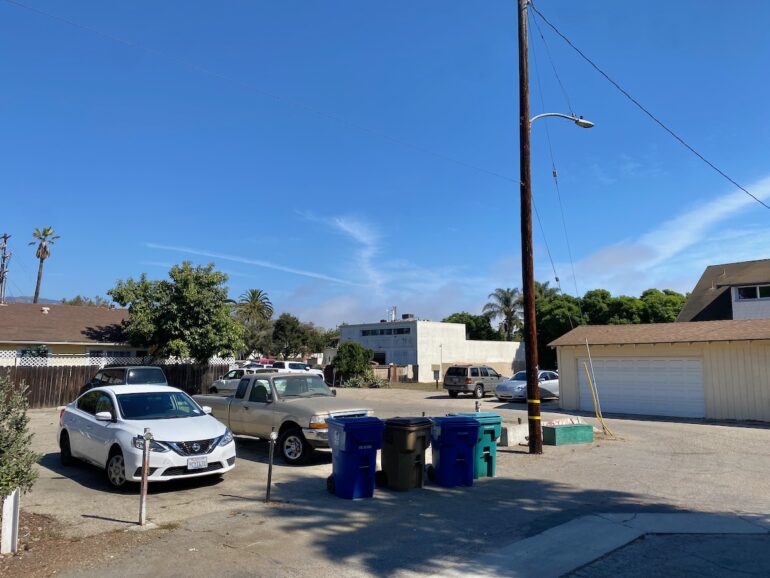
Placido Avenue is also home to this nice three-bedroom house. And it runs into the vacant lot at 312-316 W. Carrillo Street. According to the listing, “Sellers also own 10-unit apartment at 318 W. Carrillo St., and are open to including it in this offering (but will not sell it alone at this time).” The price is “best offer.”


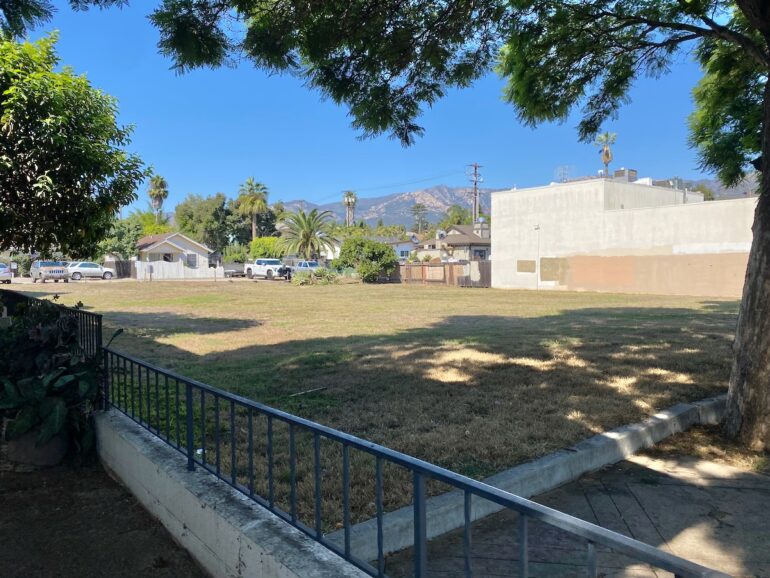 It was around this time that I went off-route for a scoop of ice cream at McConnell’s on State Street. I was bummed that peppermint stick was not on the menu—I thought it was a perennial, Michael—but made do with “sea salt cream & cookies,” which differs from “cookies & cream” (also available) in ways the staffer attempted to explain.
It was around this time that I went off-route for a scoop of ice cream at McConnell’s on State Street. I was bummed that peppermint stick was not on the menu—I thought it was a perennial, Michael—but made do with “sea salt cream & cookies,” which differs from “cookies & cream” (also available) in ways the staffer attempted to explain.
 Two more waste-of-space parking lots on De La Vina….
Two more waste-of-space parking lots on De La Vina….
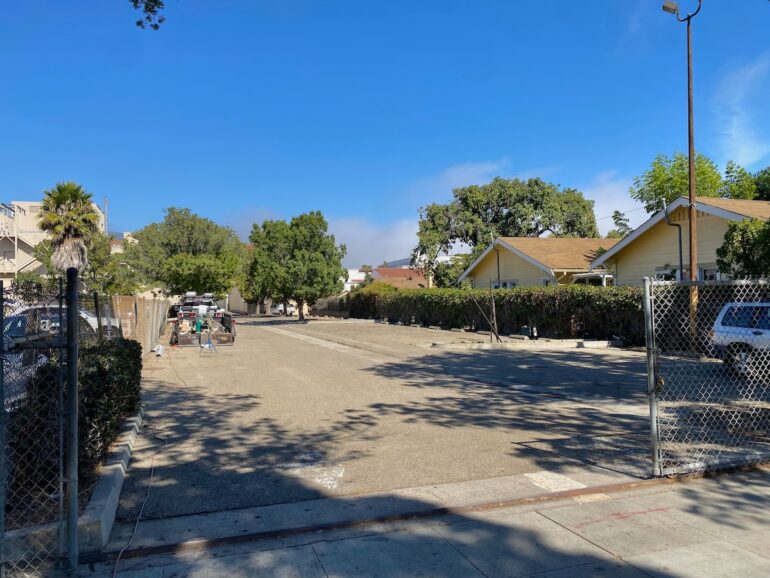
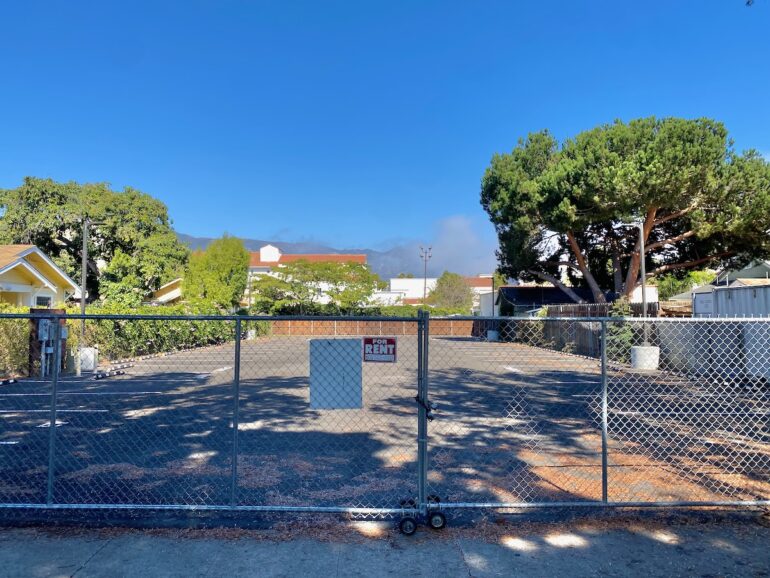 …which isn’t to say that housing isn’t in the works. The parking lot at Carrillo and Castillo—and the 15 stunning Tipuana Tipu trees—will be replaced by 63 units of affordable housing.
…which isn’t to say that housing isn’t in the works. The parking lot at Carrillo and Castillo—and the 15 stunning Tipuana Tipu trees—will be replaced by 63 units of affordable housing.
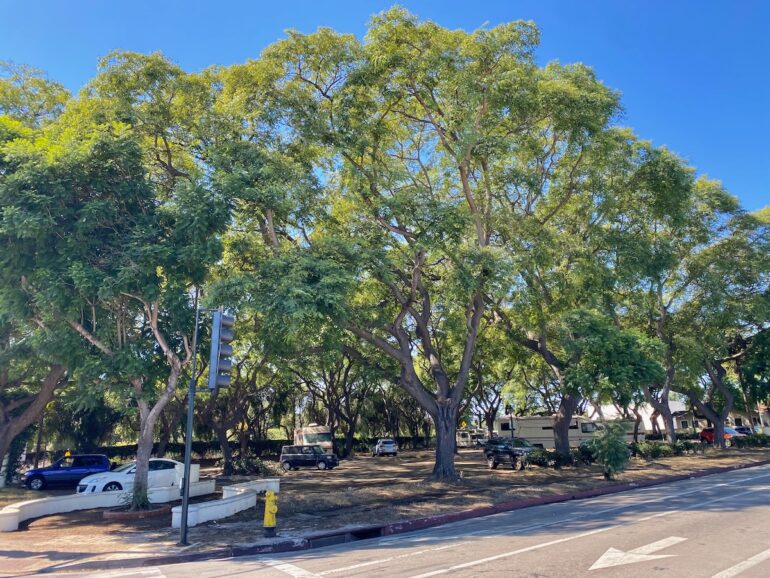 And the former Jiffy Lube at Carrillo and De La Vina will be the site of a four-story, 22-unit apartment building. Anyone know what that’s supposed to be atop the chimney in the rendering? The Grinch?
And the former Jiffy Lube at Carrillo and De La Vina will be the site of a four-story, 22-unit apartment building. Anyone know what that’s supposed to be atop the chimney in the rendering? The Grinch?
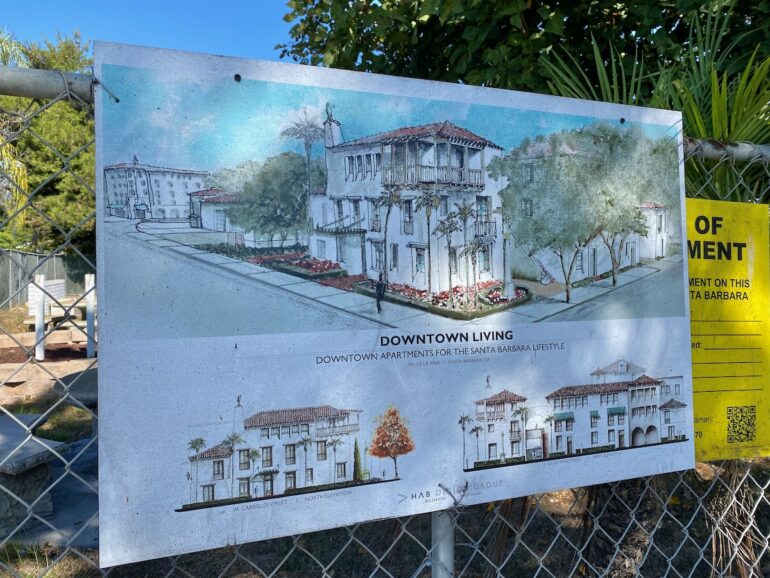
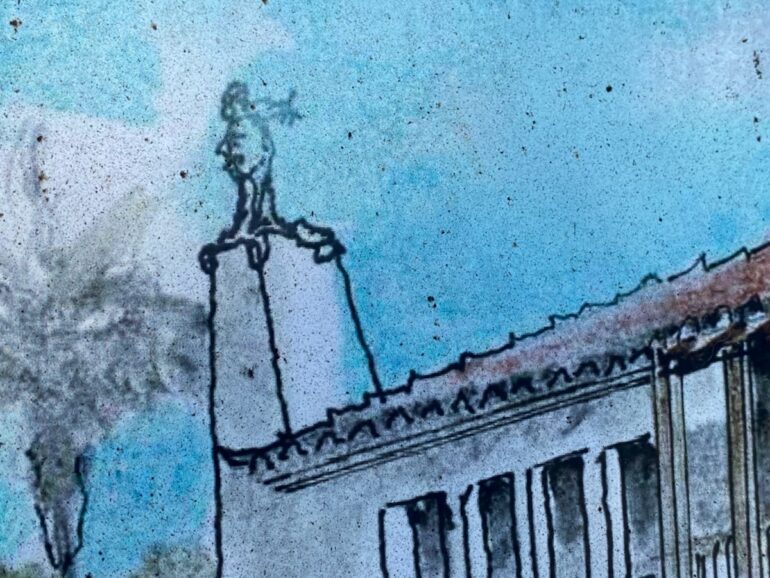 Some aspects of walking in Santa Barbara are always kind of the same, but no less charming for it. For instance, there will be old cars.
Some aspects of walking in Santa Barbara are always kind of the same, but no less charming for it. For instance, there will be old cars.
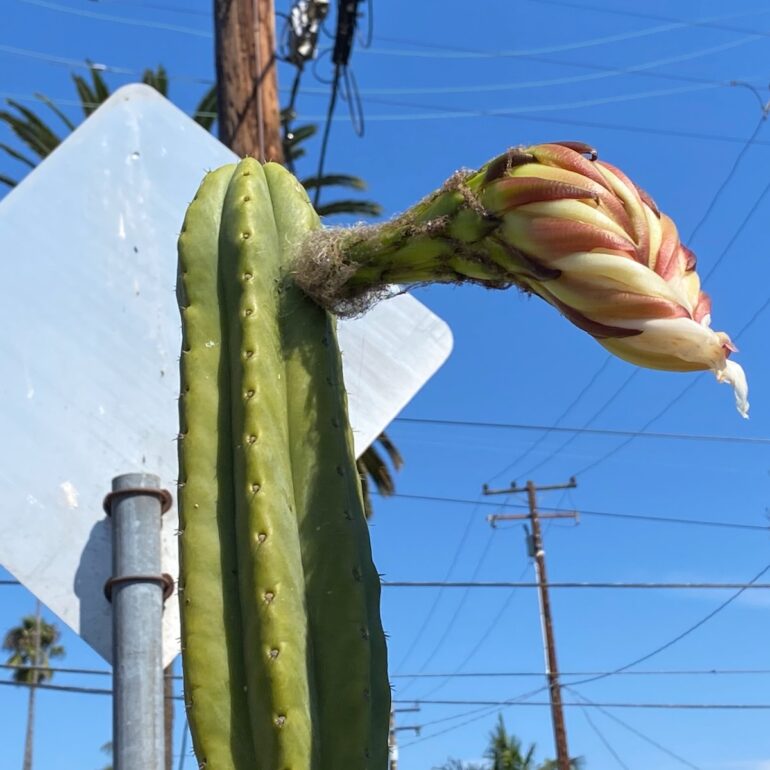
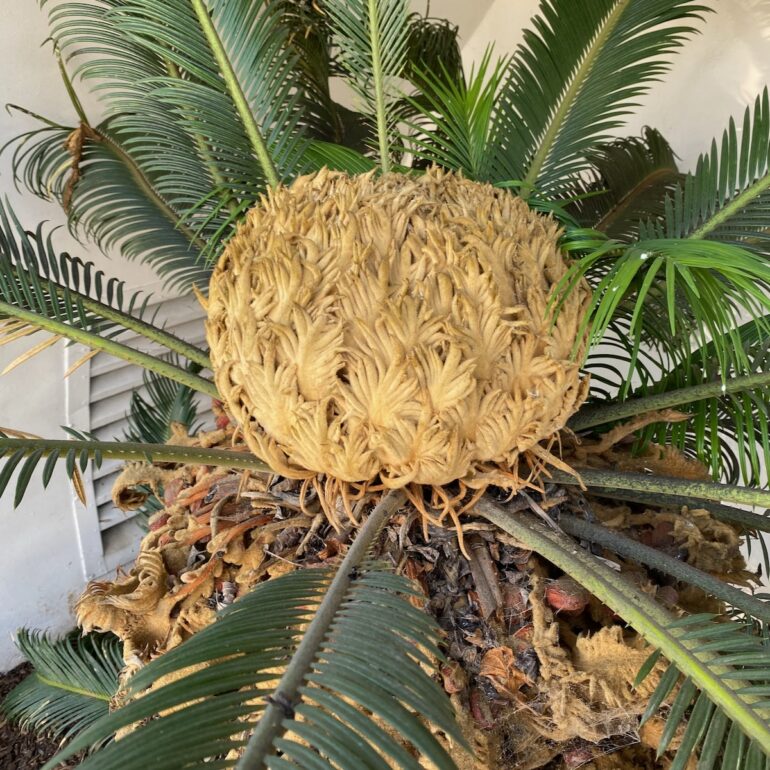
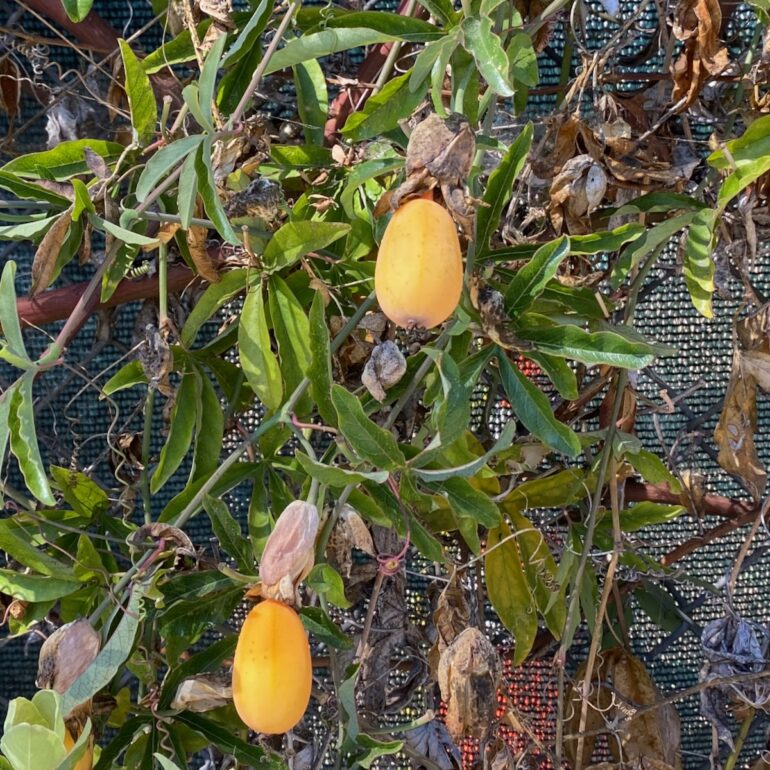 And Little Free Libraries. Finally, a solution for those unread issues of The New Yorker.
And Little Free Libraries. Finally, a solution for those unread issues of The New Yorker.
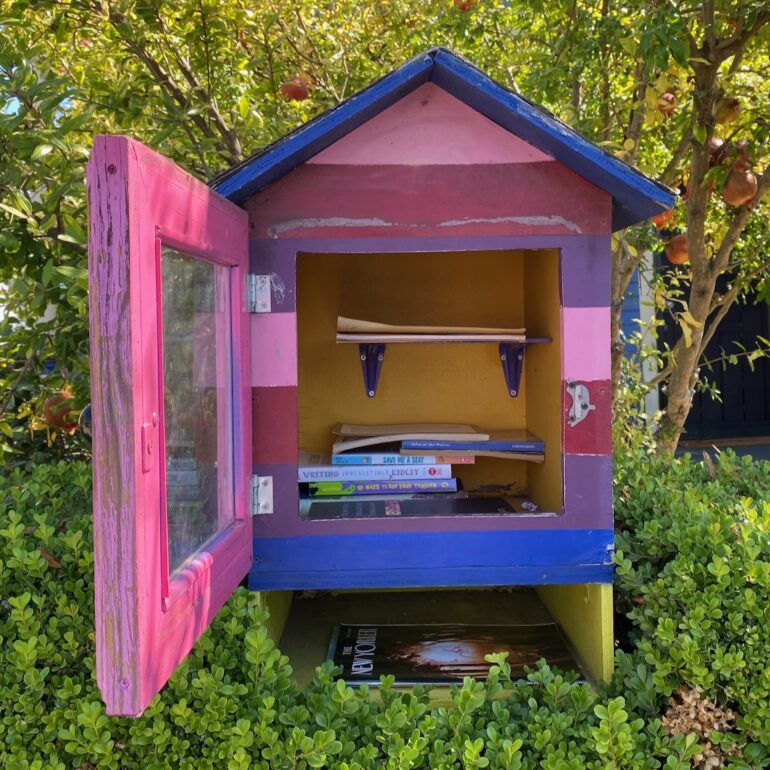 And there will be discoveries, too. I knew Crossfit Pacific Coast existed, but I don’t think I had ever noticed it before. Or seen the underside of a manhole. (TWSS!) Maybe the Crossfitters could use them for training.
And there will be discoveries, too. I knew Crossfit Pacific Coast existed, but I don’t think I had ever noticed it before. Or seen the underside of a manhole. (TWSS!) Maybe the Crossfitters could use them for training.
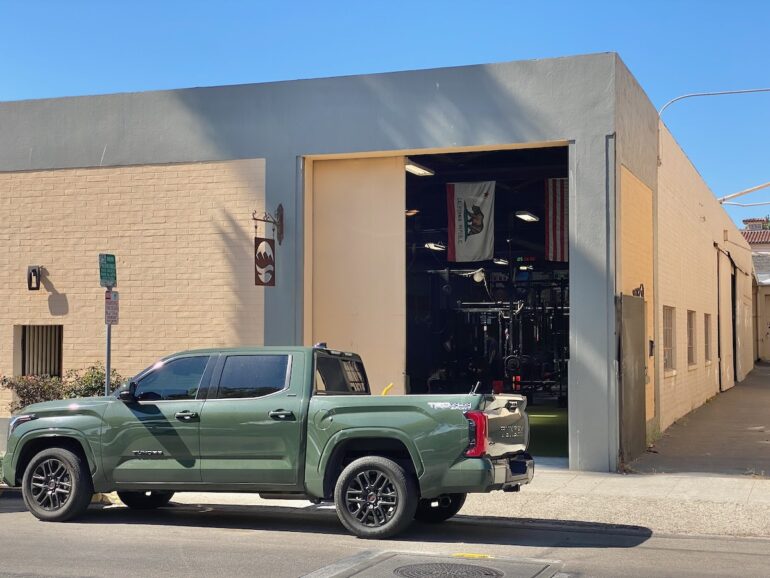
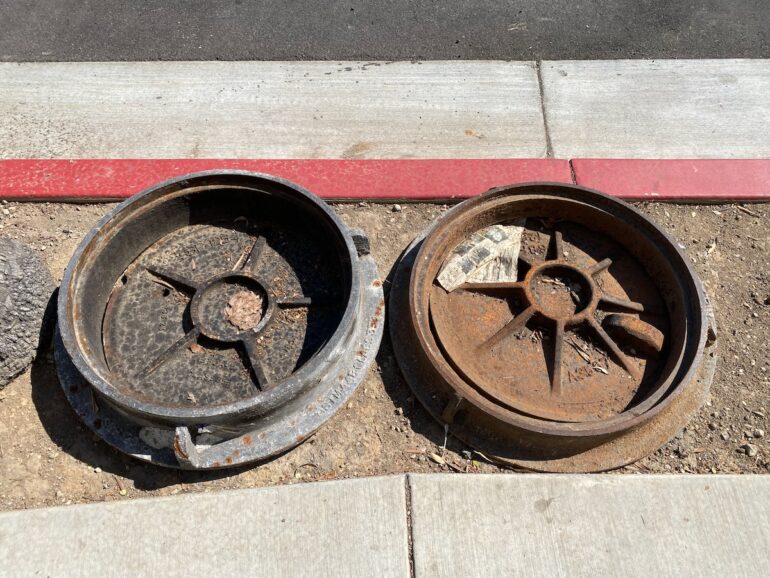 And there will be mysteries solved. FOE stands for Fraternal Order of Eagles, “an international non-profit organization uniting fraternally in the spirit of liberty, truth, justice, and equality, to make human life more desirable by lessening its ills and promoting peace, prosperity, gladness and hope.” Judging from the local chapter’s Facebook posts, the Bath Street clubhouse is primarily a spot to have a drink or an event.
And there will be mysteries solved. FOE stands for Fraternal Order of Eagles, “an international non-profit organization uniting fraternally in the spirit of liberty, truth, justice, and equality, to make human life more desirable by lessening its ills and promoting peace, prosperity, gladness and hope.” Judging from the local chapter’s Facebook posts, the Bath Street clubhouse is primarily a spot to have a drink or an event.
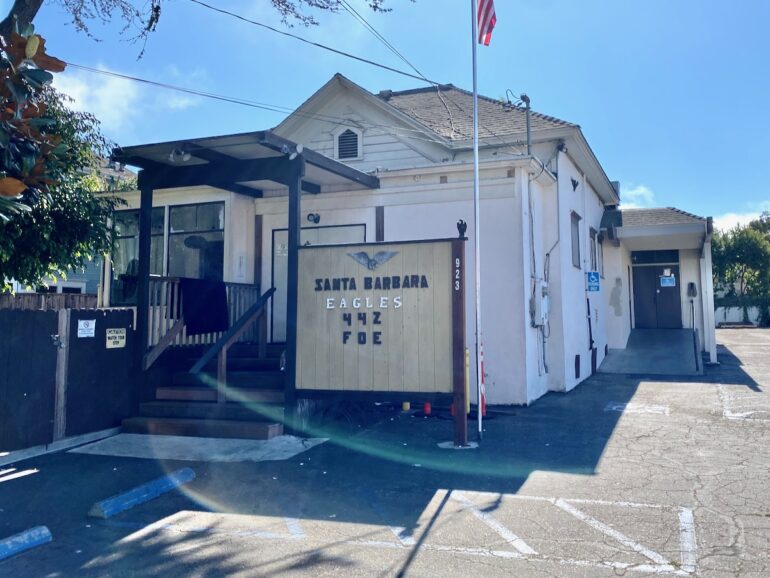 The Fuelman Network, seen here at the Speedway Express gas station at Carrillo and Castillo, is “the smart and easy way to control fuel expenses. With programs that offer customizable fuel control, comprehensive and timely reporting, exception alerts and acceptance at 50k+ stations nationwide, Fuelman offers a Fleet Fuel Management Program to help keep your business running smoothly.”
The Fuelman Network, seen here at the Speedway Express gas station at Carrillo and Castillo, is “the smart and easy way to control fuel expenses. With programs that offer customizable fuel control, comprehensive and timely reporting, exception alerts and acceptance at 50k+ stations nationwide, Fuelman offers a Fleet Fuel Management Program to help keep your business running smoothly.”
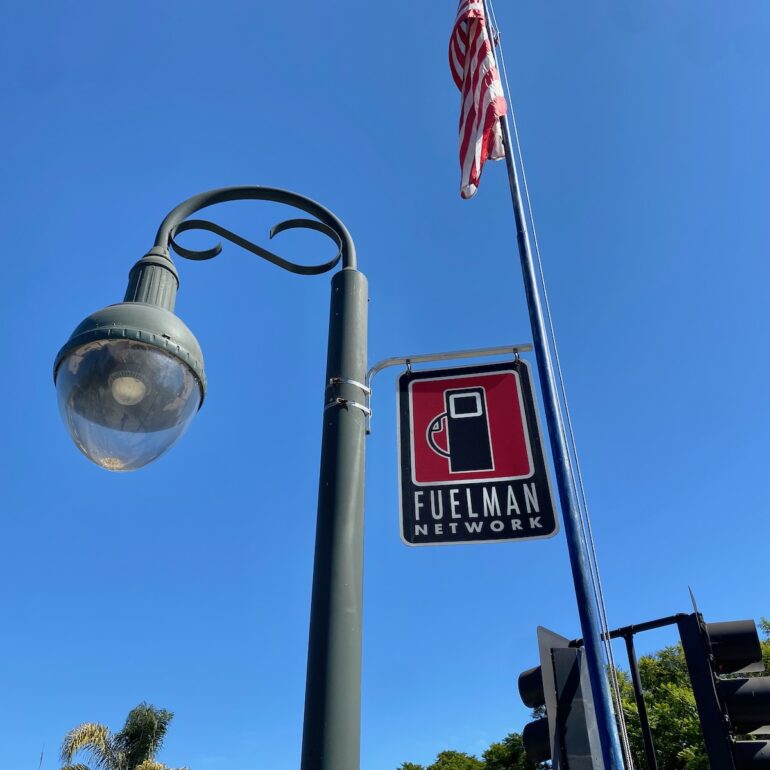 And then there’s 202 W. Canon Perdido, about which someone asked on Reddit five years ago: “Is it haunted? Just some eclectic collecting? The entrance to a speakeasy?” Another commenter answered: “This mysterious ‘cage’ is not a cage at all, the bars were put up because ‘the weenies’ will steal anything that isn’t secured, because life is difficult. The porch at 202 B W Canon Perdido is a living art installation maintained and now curated by the ‘Knights of the Rondo’ but originally created and developed by my fantastic, eccentric, collector artist father Gary Ray Chafe who lived and worked at this studio for the last 25 years of his life. As Santa Barbara becomes more prohibitively expensive the unique character of the alternative style people who lived there changes, and sadly disappears. Gary was a very well known SB person in his day, always lived downtown, and made a humble living off of his prolific, multi medium artwork for more than 60 years, being very prolific in monotype prints, oil paintings and sculpture. If you are truly interested please go to garychafe.com.”
And then there’s 202 W. Canon Perdido, about which someone asked on Reddit five years ago: “Is it haunted? Just some eclectic collecting? The entrance to a speakeasy?” Another commenter answered: “This mysterious ‘cage’ is not a cage at all, the bars were put up because ‘the weenies’ will steal anything that isn’t secured, because life is difficult. The porch at 202 B W Canon Perdido is a living art installation maintained and now curated by the ‘Knights of the Rondo’ but originally created and developed by my fantastic, eccentric, collector artist father Gary Ray Chafe who lived and worked at this studio for the last 25 years of his life. As Santa Barbara becomes more prohibitively expensive the unique character of the alternative style people who lived there changes, and sadly disappears. Gary was a very well known SB person in his day, always lived downtown, and made a humble living off of his prolific, multi medium artwork for more than 60 years, being very prolific in monotype prints, oil paintings and sculpture. If you are truly interested please go to garychafe.com.”
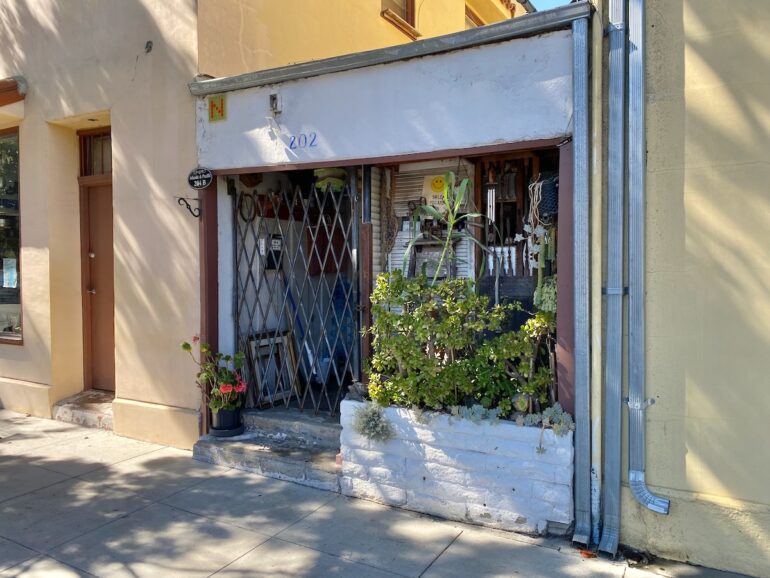 I ran that by Michael E. Long, an artist who was “in the Rondo from 2012-2022. My studio mates, Ethan Turpin and Matt Straka, are still there. Unfortunately, I moved out with most of the oddities and strangeness to my live/work studio near the Mission.” He sent over this photo from when the entrance really had something to say.
I ran that by Michael E. Long, an artist who was “in the Rondo from 2012-2022. My studio mates, Ethan Turpin and Matt Straka, are still there. Unfortunately, I moved out with most of the oddities and strangeness to my live/work studio near the Mission.” He sent over this photo from when the entrance really had something to say.
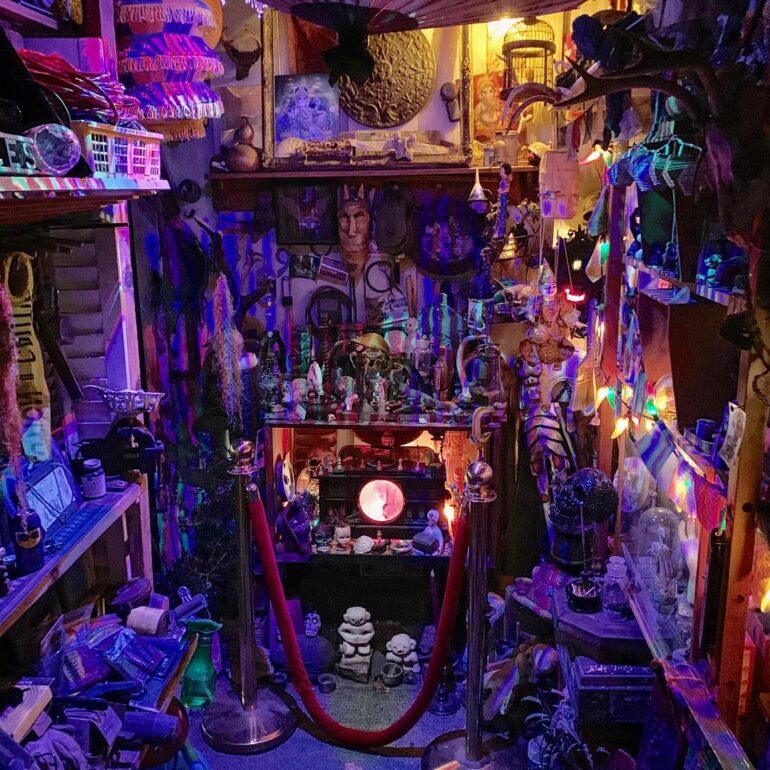 He also sent over a photo from 1963, when the space was a bar called the Rondo.
He also sent over a photo from 1963, when the space was a bar called the Rondo.
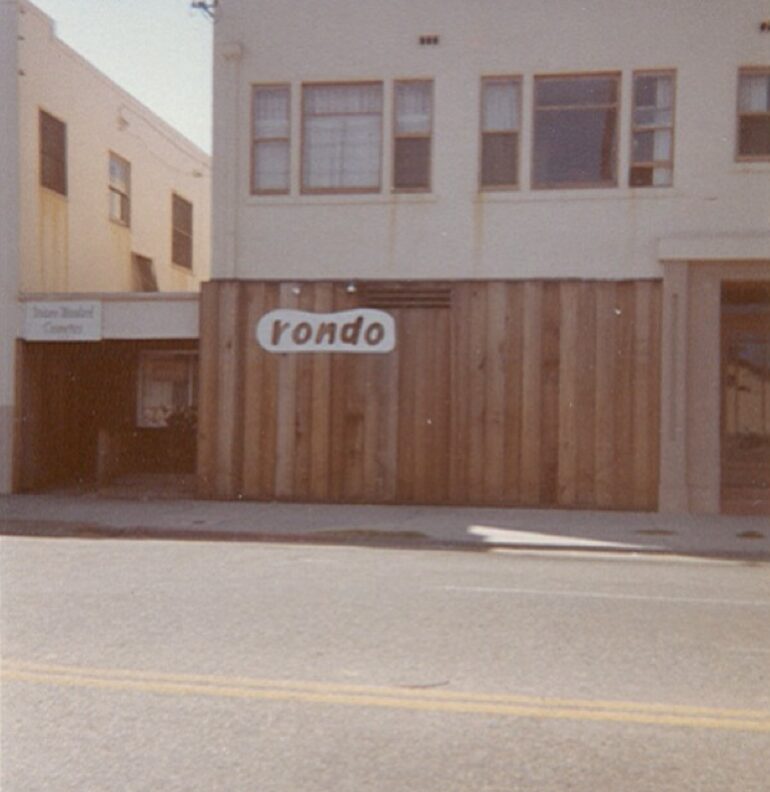 And there will be mysteries that remain unsolved. Why did the crosswalks at Anapamu and Castillo get special treatment?
And there will be mysteries that remain unsolved. Why did the crosswalks at Anapamu and Castillo get special treatment?
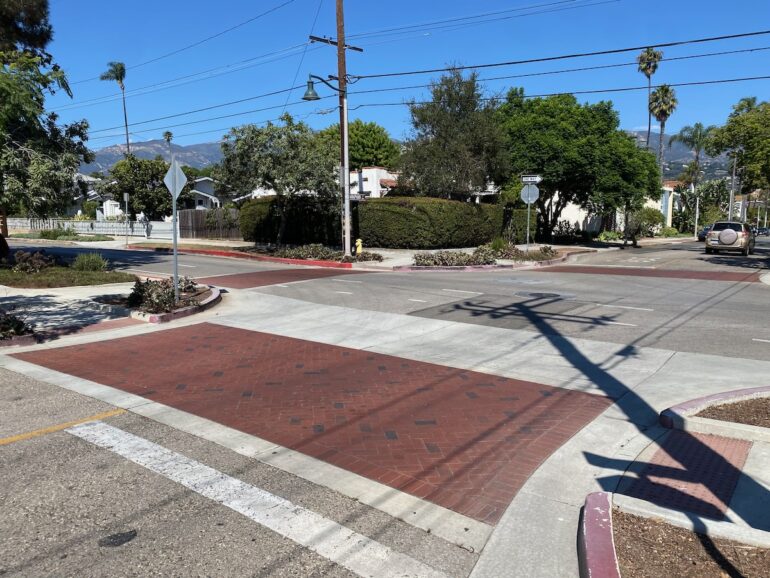 What are these things outside the exit to the Santa Barbara Club’s parking lot?
What are these things outside the exit to the Santa Barbara Club’s parking lot?
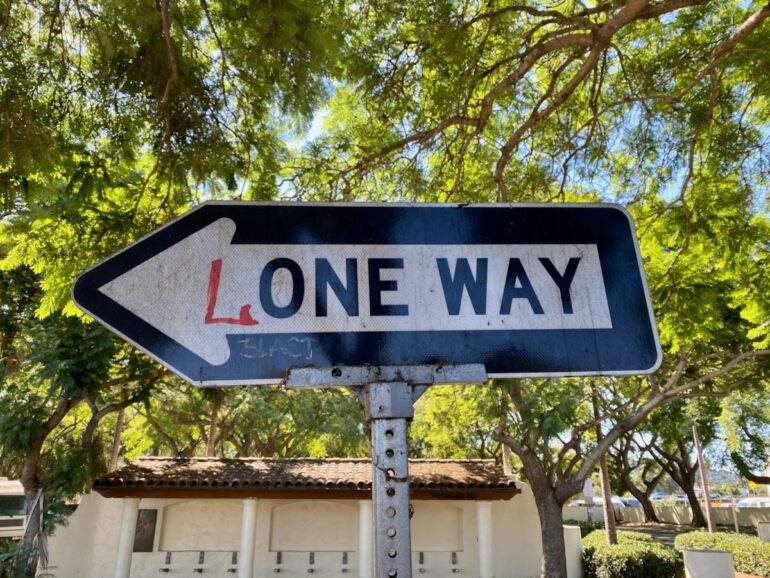 And there will also be eye rolling—at a sign warning of cars coming the wrong direction, for instance, or another sign indicating the way to a department store that closed over four years ago.
And there will also be eye rolling—at a sign warning of cars coming the wrong direction, for instance, or another sign indicating the way to a department store that closed over four years ago.
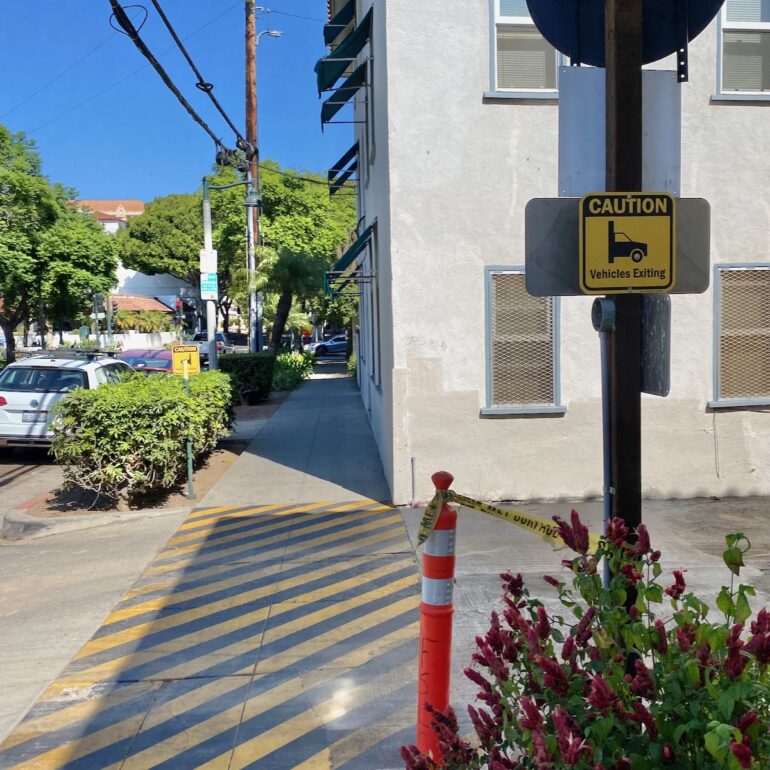
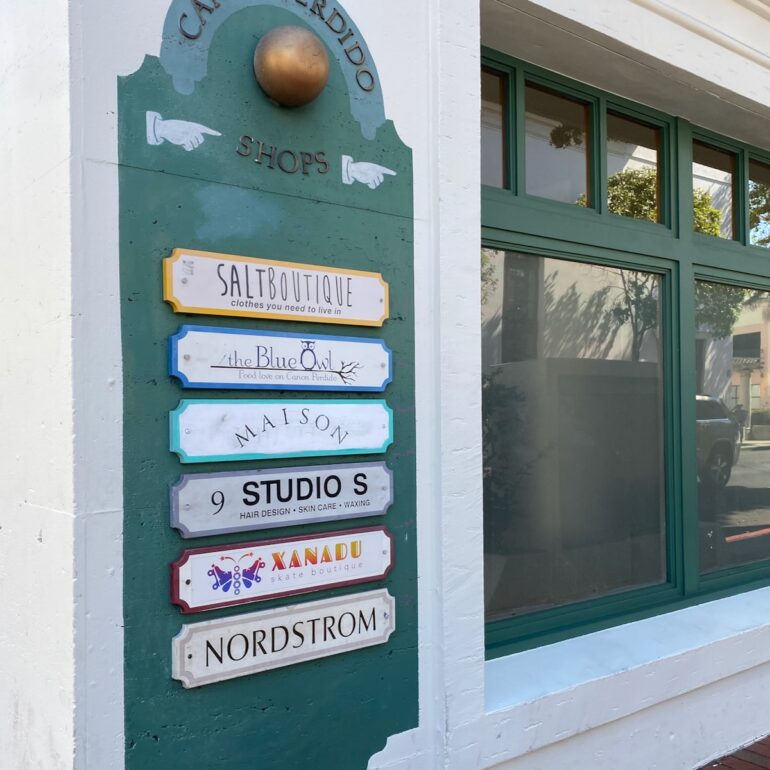 And there will be quirk! Like an indoor-outdoor birdhouse, the bumper stickers of “one hot grandpa,” and a relative of the Log Lady.
And there will be quirk! Like an indoor-outdoor birdhouse, the bumper stickers of “one hot grandpa,” and a relative of the Log Lady.
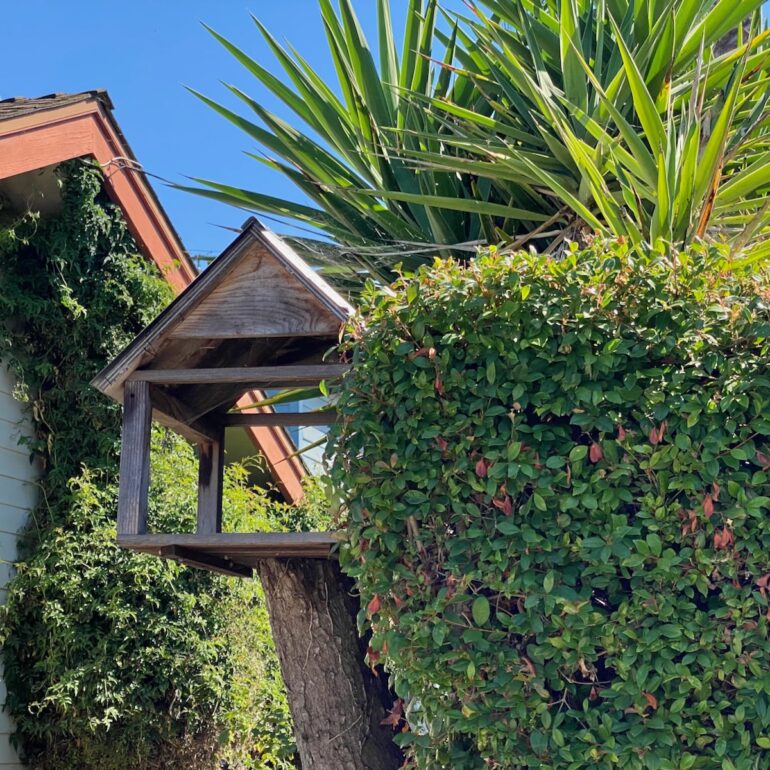
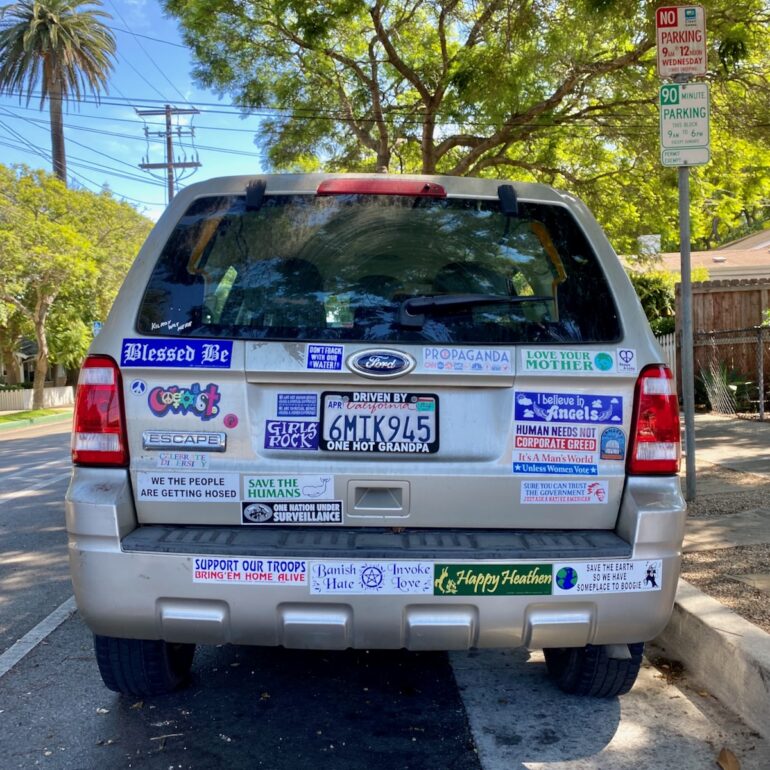
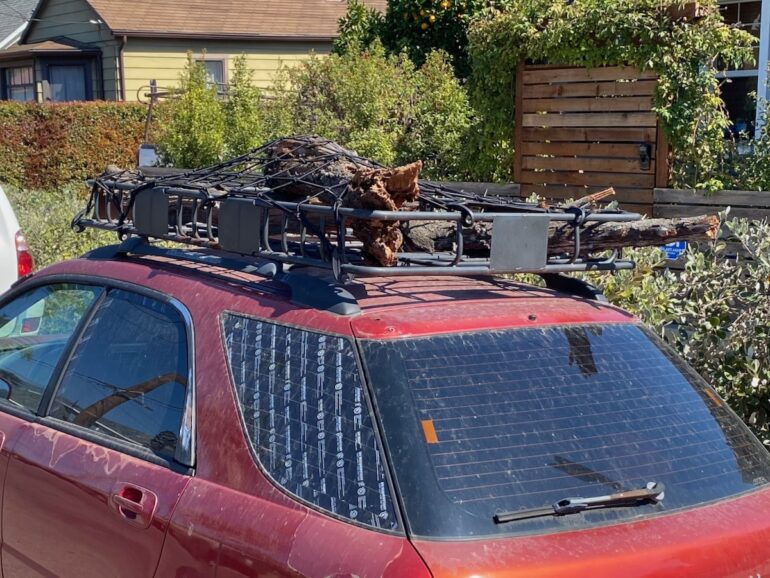 None of which compares to the floral enthusiasm at 1128 Bath Street, where every day is Solstice…
None of which compares to the floral enthusiasm at 1128 Bath Street, where every day is Solstice…
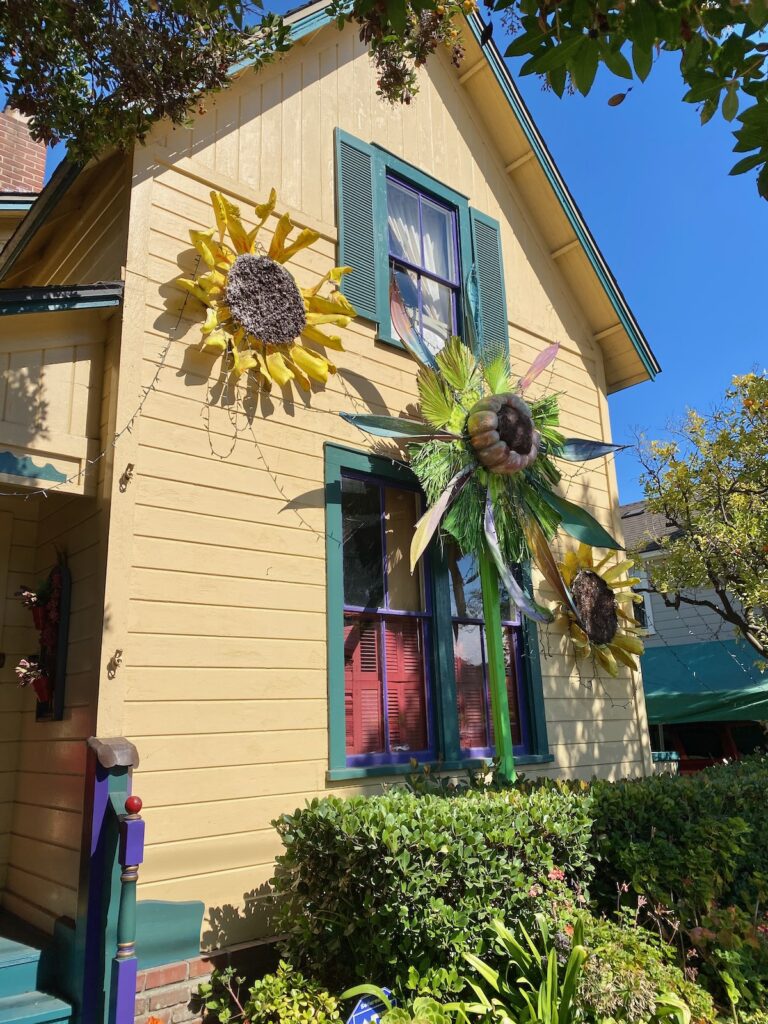
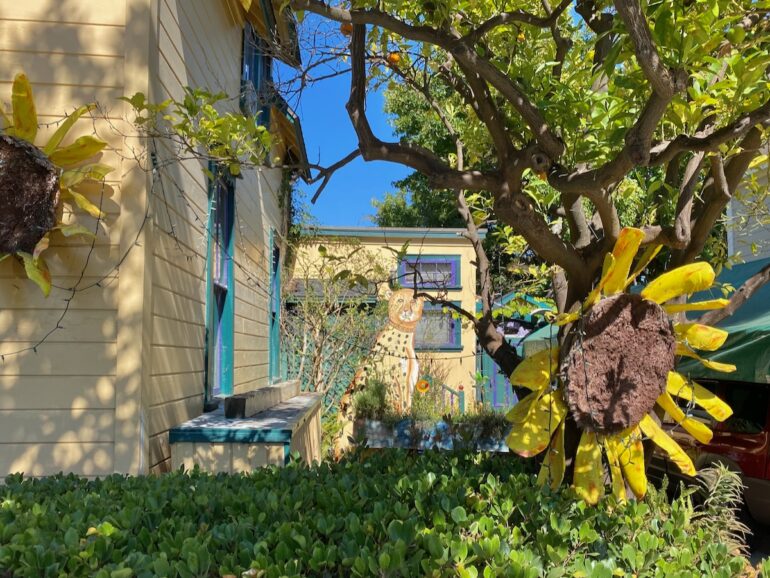 …or the outdoor art studio on W. Anapamu Street…
…or the outdoor art studio on W. Anapamu Street…
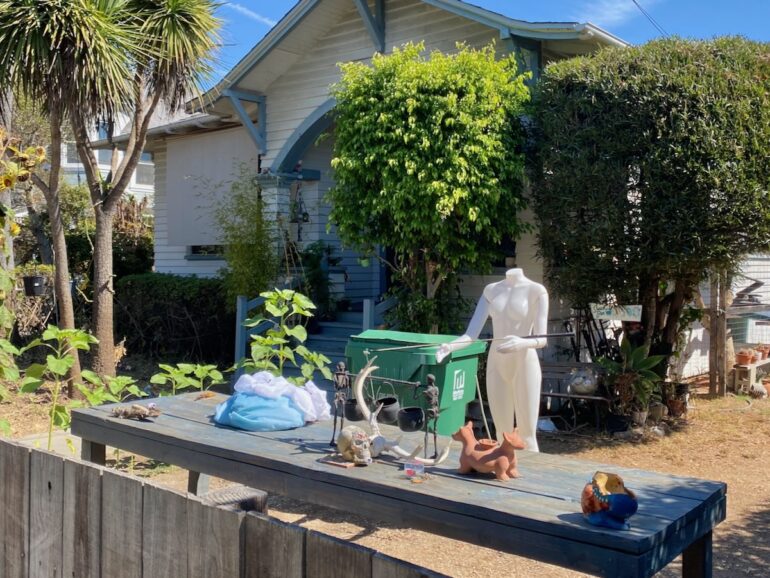
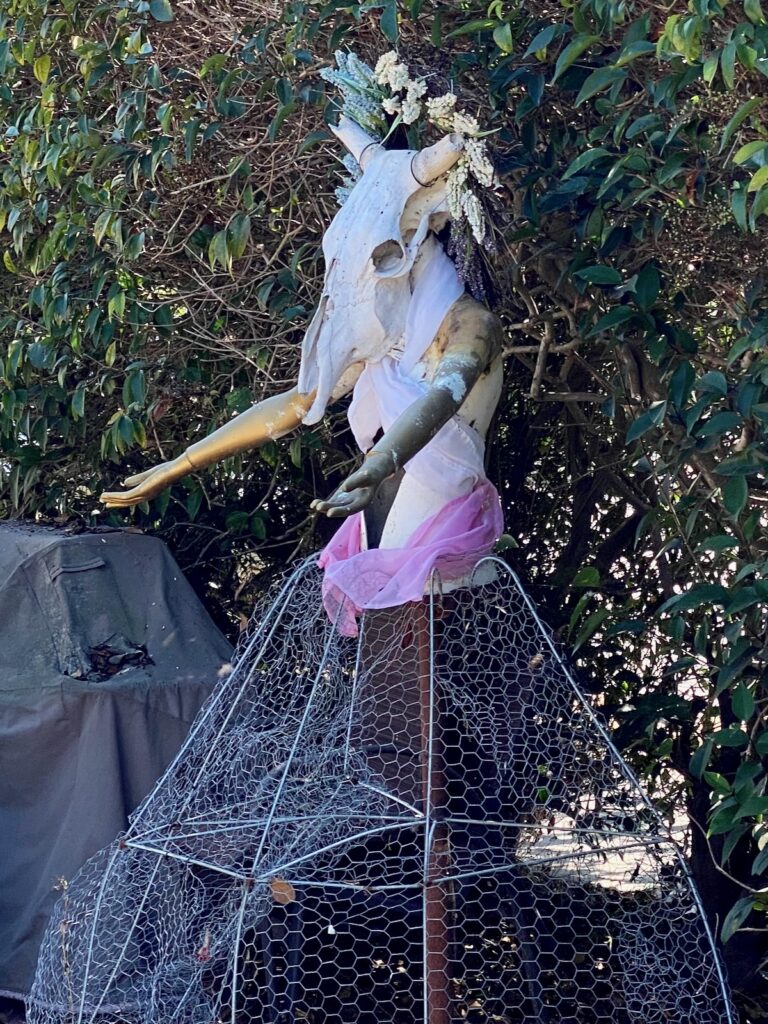 …or, I imagine, the Susan Quinlan Doll & Teddy Bear Museum & Library. I didn’t venture inside, but I will one day. That’s a promise.
…or, I imagine, the Susan Quinlan Doll & Teddy Bear Museum & Library. I didn’t venture inside, but I will one day. That’s a promise.
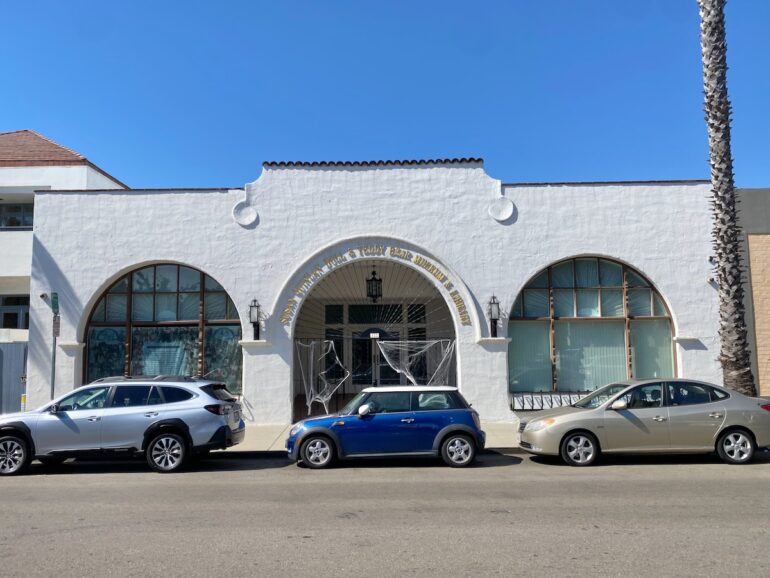
················
Walk With Me…
Downtown Santa Barbara
• The Gritty Glamour of the Funk Zone
• The Upper Upper East Is Busting Out All Over
• The Presidio: In the Footsteps of Old Santa Barbara
• Brinkerhoff, Bradley, and Beyond
• Mixing Business and Pleasure in East Beach
• It’s Only Milpas Street (But I Like It)
• The Haley Corridor Is Keeping It Real
• The Small Pleasures of Bungalow Haven
• Is There a Better Neighborhood for a Stroll Than West Beach?
• E. Canon Perdido, One of Downtown’s Best Strolling Streets
Eastside
• Where the Eastside Meets the Lower Riviera
Oak Park / Samarkand
• The Side Streets and Alleyways of Upper Oak Park
• The Small-Town Charms of Samarkand
The Riviera
↓↓↓ The Ferrelo-Garcia Loop
• Scaling the Heights of Las Alturas
• High on the Lower Riviera
Eucalyptus Hill
• On the Golden Slope of Eucalyptus Hill
• Climbing the Back of Eucalyptus Hill
San Roque
• Amid the Saints of South San Roque
• Voyage to the Heart of the San Roque Spider Web
TV Hill / The Mesa
• The Metamorphosis of East Mesa
• The Highs and Lows of Harbor Hills
• Walking in Circles in Alta Mesa
• West Mesa Is Still Funky After All These Years
• A Close-Up Look at TV Hill
Hidden Valley / Yankee Farm / Campanil
• Campanil is a Neighborhood in Flux
• An Aimless Wander Through Hidden Valley
• The Unvarnished Appeal of Yankee Farm
Hope Ranch / Hope Ranch Annex / Etc.
• A Country Stroll on El Sueno Road
Montecito
• A Relatively Modest Montecito Enclave
• Out and Back on Ortega Ridge
• The Heart of Montecito Is in Coast Village
• Quintessential Montecito at Butterfly Beach
• Once Upon a Time in the Hedgerow
• Where Montecito Gets Down to Business
• In the Heart of the Golden Quadrangle
• Up, Down, and All Around Montecito’s Pepper Hill
• Montecito’s Prestigious Picacho Lane
• School House Road and Camphor Place
Summerland / Carpinteria
• A Stroll in the Summerland Countryside
• Admiring the Backsides of Beachfront Houses on Padaro Lane
• Whitney Avenue in Summerland
Goleta / Isla Vista
• A Tough Nut to Crack in Goleta
• Where the Streets Have Full Names
• The Past Is Still Present in Old Town Goleta
• Social Distancing Made Easy at UCSB
················
Sign up for the Siteline email newsletter and you’ll never miss a post.


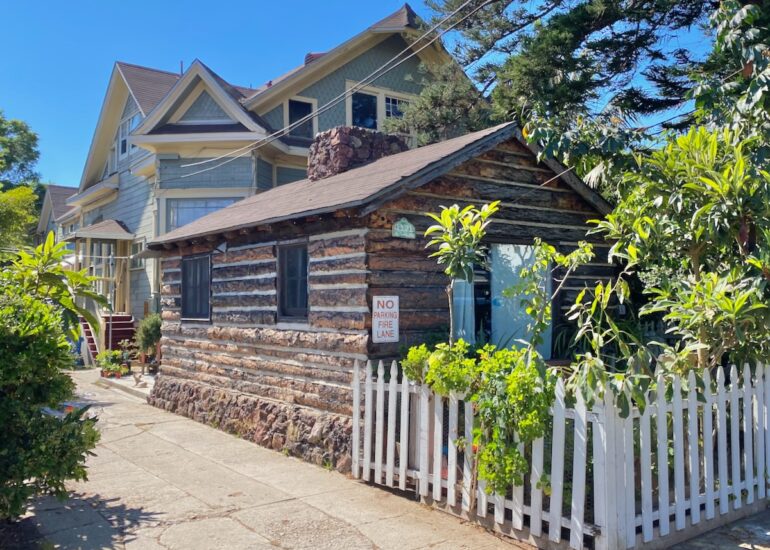
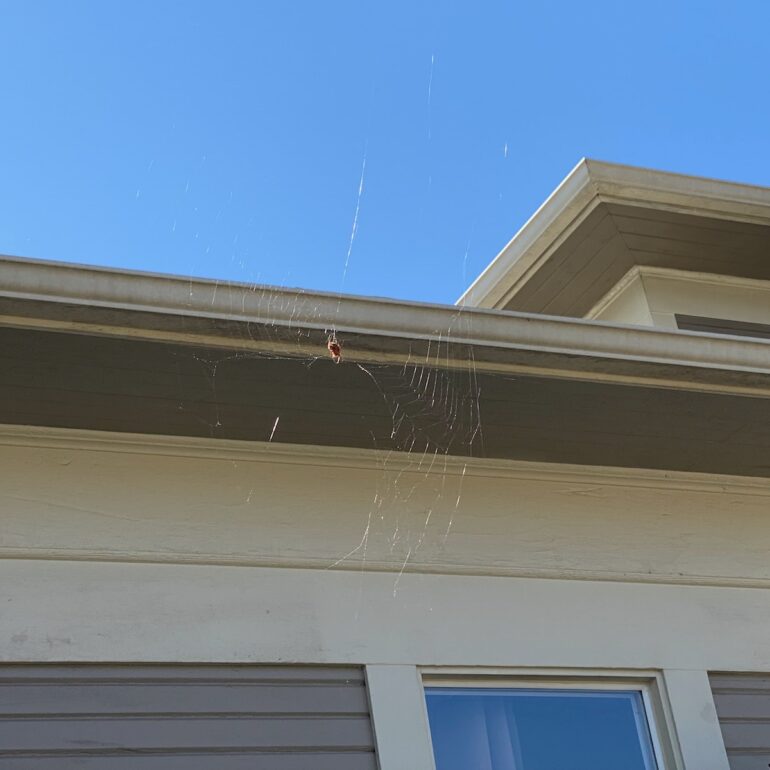
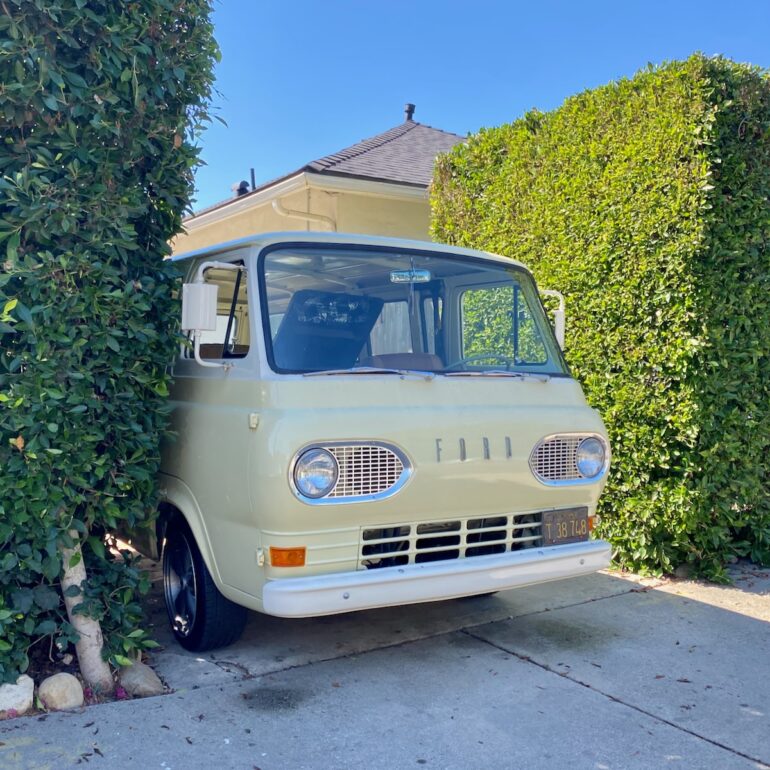
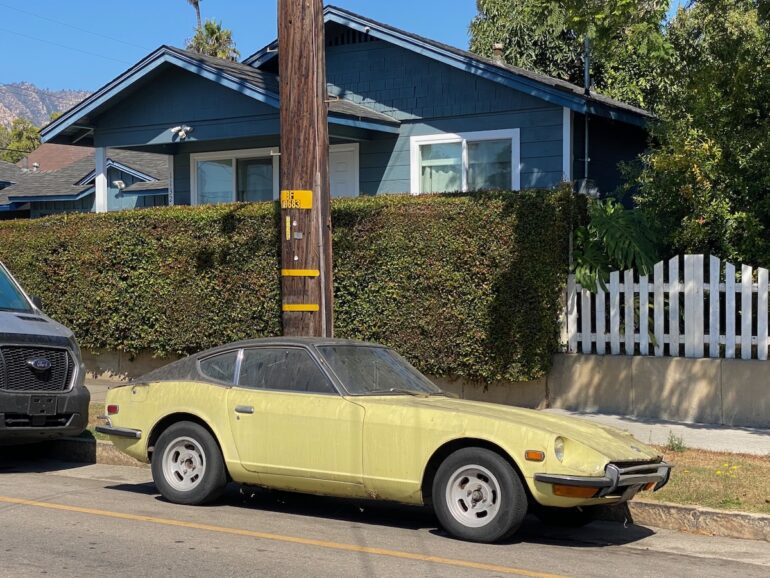
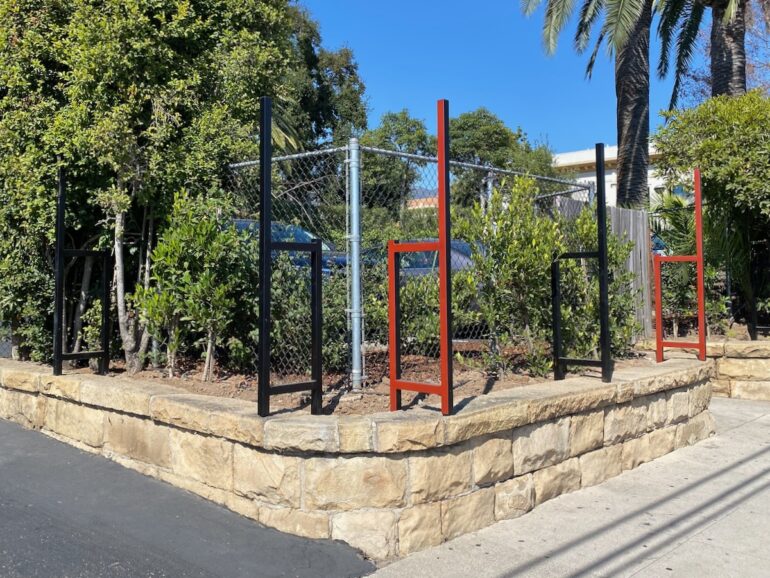
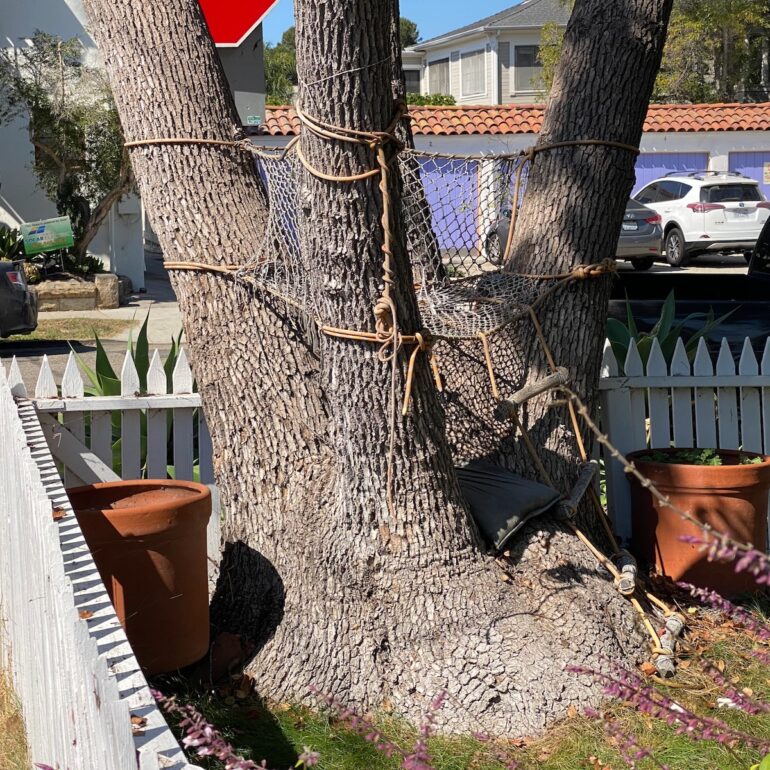





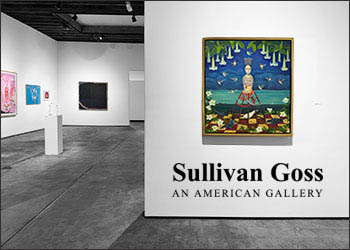
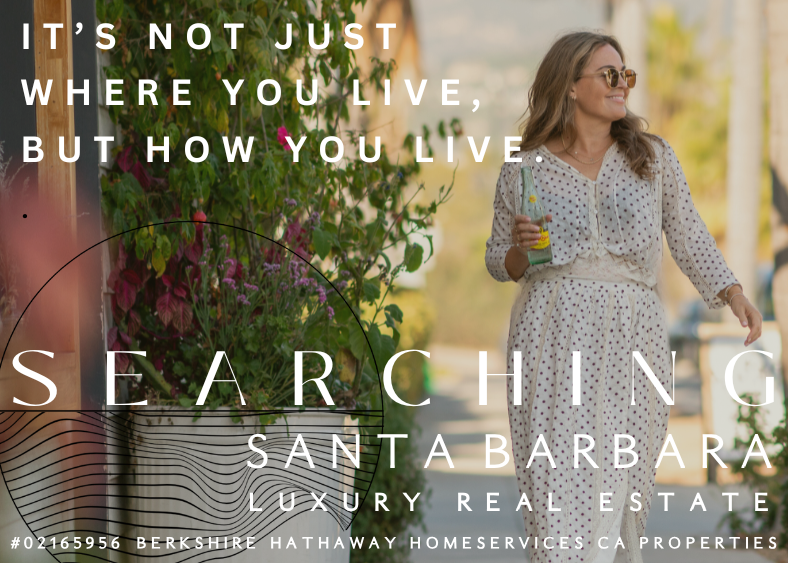
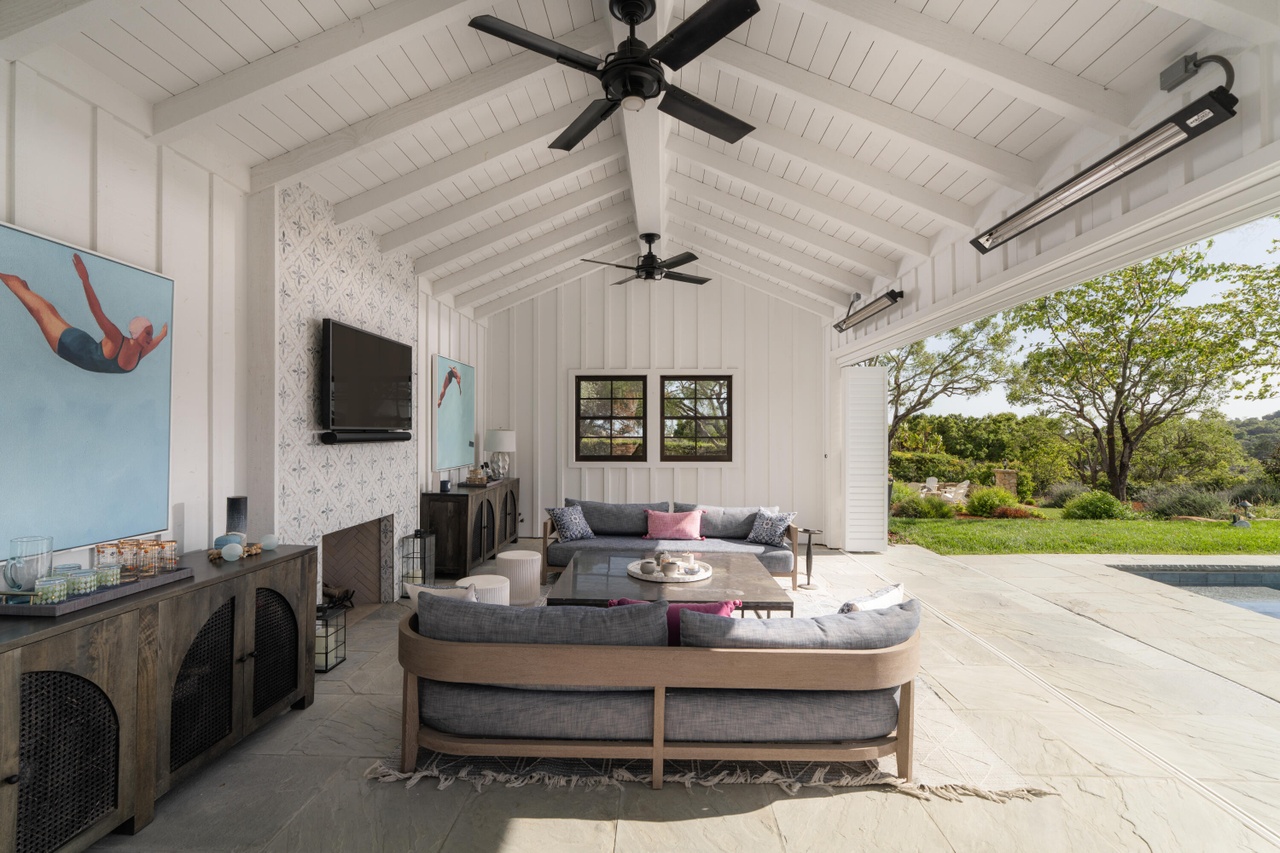



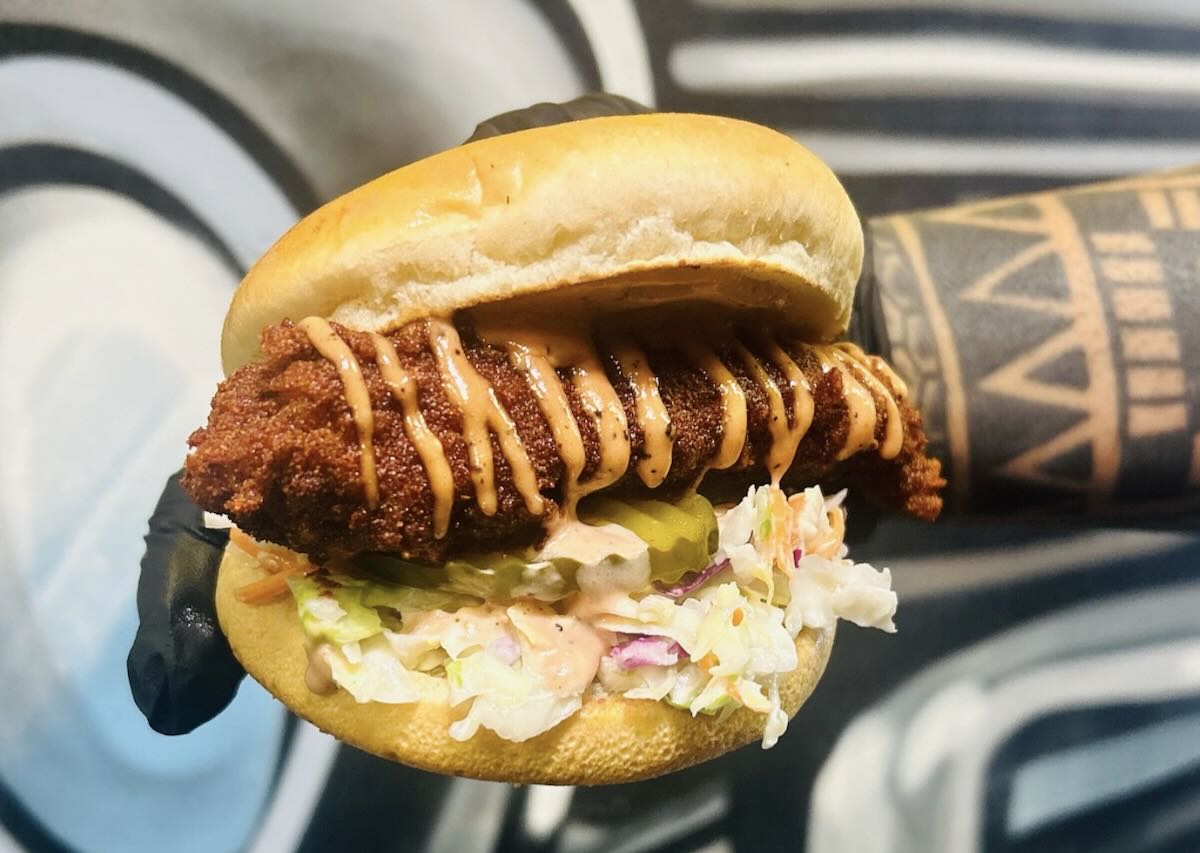
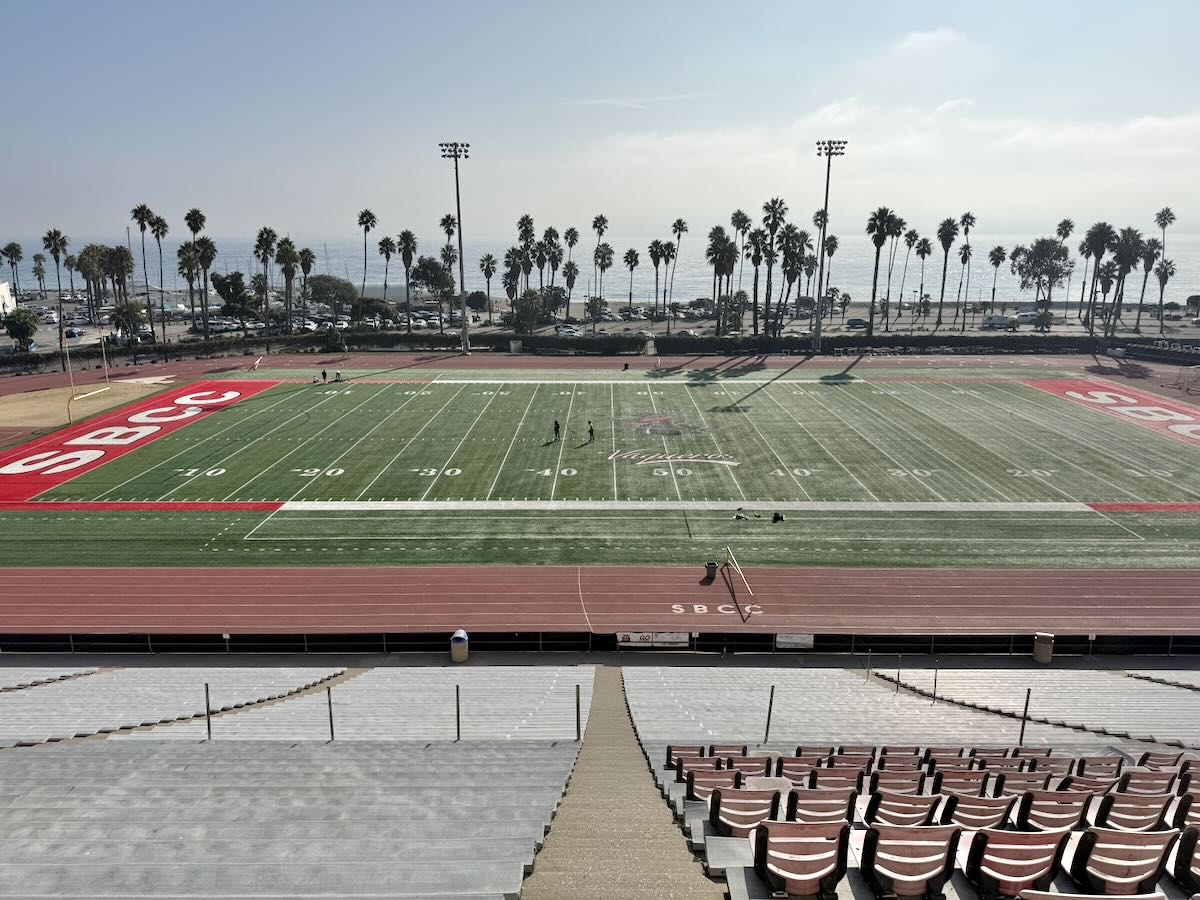

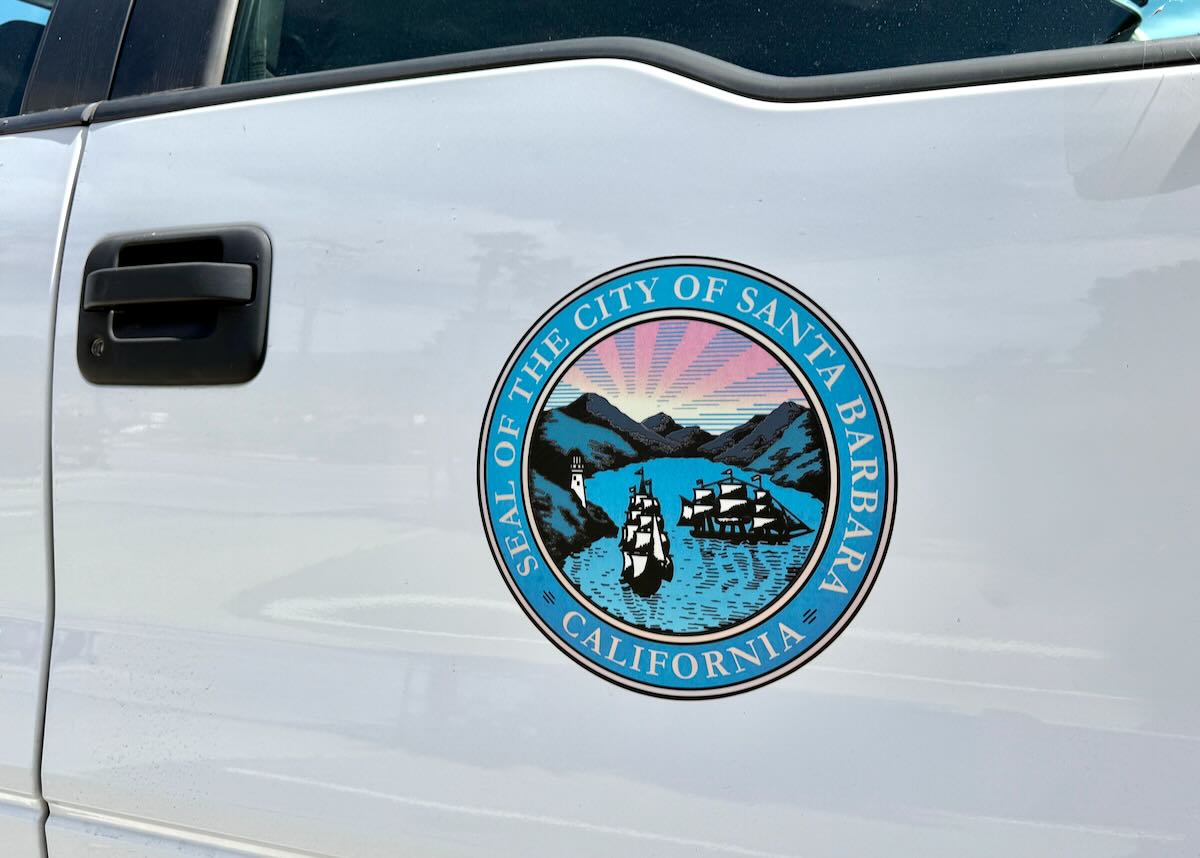
During college I lived in a big Victorian across the street from the Eagles clubhouse on Bath. Used to walk by the Poor Richard Pub on my way to my summer waitressing job at the Carrow’s on Carrillo. Never went into the Pub, we did our drinking in those days at Joes and the happy hour at El Paseo where we’d get free food with one drink.
Thanks for this stroller down memory lane! I lived at 218 W Anapamu when I first lived in SB in 2002. My friend and I had just moved from the Midwest and didn’t initially realize how lucky we were to be in such a great neighborhood. Our landlady was an artist and lived in the blue dupex. My friend and I would walk past Garden Court and say we’d live there together as old ladies with our little dogs.
We bought 216 and 218 Anapamu in 2007. We feel the same way you do. We love living there.
Another entertain-formative walk about! Thank you Erik. But for me, what stands out are your words that perfectly describe both the wonderful soul and danger to our old neighborhoods:
” …the flavor of Santa Barbara goes well beyond Spanish Colonial Revival architecture; the glorious mix is what makes this town unique, rather than a mere facsimile of somewhere else. (And so little of the new Spanish Colonial Revival architecture seems to come from the heart. It’s just a value-engineered version of a century-old style.)”
The irony of it is that the city’s well-intentioned leaders in the early 1900’s (especially after the earthquake) chose the Spanish Colonial Revival style to escape the well-worn Victorian style of the day and stand out with the unique Spanish style.
Best “Walk With Me” yet. I thought I knew this neighborhood well but you see so much more detail when walking vs. driving. I love the quirkiness and variety of older cities, especially ours since people haven’t fled the downtown like so many others.
The Susan Quinlan Doll and Teddy Bear Museum is a Santa Barbara hidden gem and a must see. The exterior is very misleading. The inside is brightly lit and clean, beautifully maintained. Hundreds of Teddy Bears and dolls of every type are curated here by era, region, or interest. Toys also. You will relive your childhood and learn more about the history of our country. Please go and support this wonderful museum.